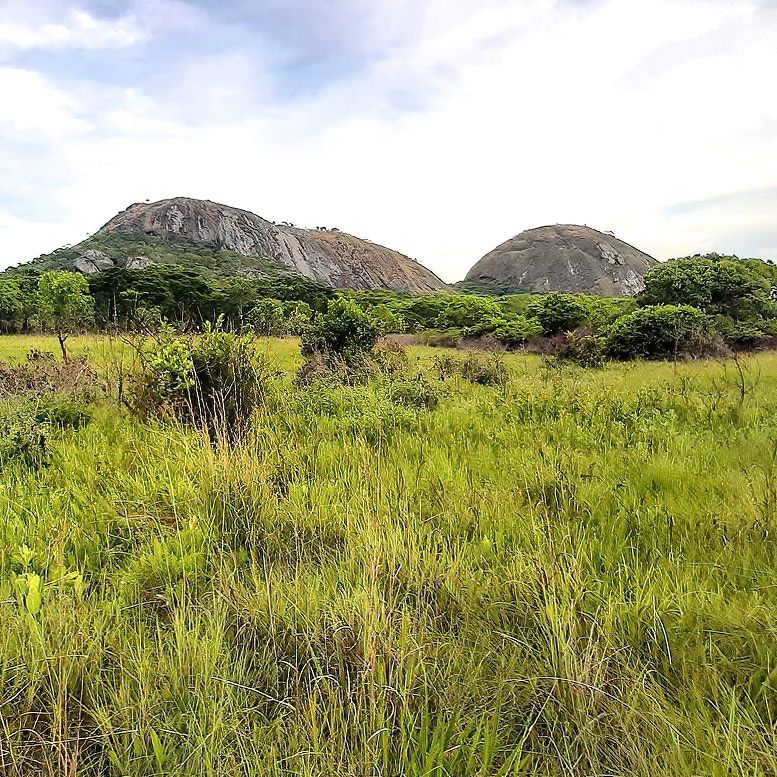
Report by Dries & Hans - all bird pictures by Marijn
Download kml file with all gps coordinates.
All sound recordings made during this trip can be found and downloaded on xeno-canto.
INTRODUCTION
Zambia is a landlocked country in central Africa. Apart from the main river valleys (Zambezi in the west and south and Luangwa in the east) and some lower lying lake basins in the North (Lake Tanganyika and Mweru), the majority of the country is part of the Central African Plateau (900m - 1400m a.s.l.). Besides the escarpments bordering the river valleys and the lake basins, the country is relatively flat. The highest areas are the Mafinga hills (over 2200m asl) and the Nyika plateau (accessible from Malawi) in the east of the country.
The dominant vegetation type is Miombo (and Mopane in the drier areas) woodland. Intrinsically associated with these woodlands are dambos which are (seasonally) wet grasslands and evergreen riparian forest (along streams and rivers) which may develop into Mushito or swamp forest on permanently wet soils. These vegetation types are often found within one area at close distance from each other such as at Kalwelwa, Kasanka NP, Mutinondo, etc. Other vegetation types include floodplains, swamps/marshes (e.g. Bangweulu), shrub/thickets (mostly in the valleys and lake basins) and cliffs/rocky outcrops (e.g. escarpments and Mutinondo).
Zambia lies central in, and takes up the vast majority of, the Zambezian Biome. This biome boasts a number of restricted species generally associated with Miombo woodland. While most of these species can be found in neighboring countries as well (most notably Tanzania, Malawi, Zimbabwe and Angola), Zambia definitely seems to offer an easy way to get a good part (all?!) of these regional target birds. This, in combination with easy accessibility and the relaxed atmosphere of the people, should do Zambia more justice as a dedicated birding destination!
An indispensable resource is the Birds of Zambia app which holds information, pictures, maps and sounds on the entire avifauna of Zambia - highly recommended! The Merlin app (Cornell) also has a Zambian package (albeit with few Zambian species missing) with good pictures, sounds and world distribution maps.
Besides these apps, the only book that covers all Zambian birds is Sinclair & Ryan's Birds of Africa south of the Sahara. Noteworthy extra resources are Roberts Birds of South Africa (also as app) and the LBJ book by Faansie Peacock (can be purchased as pdf from his website). For additional information on the distribution and biogeography of Zambian birds, see the book on Zambian IBA's (Birdlife International) and the Dowsett & Lemaire Birds of Zambia atlas. Zambia is part of the ongoing SABAP (the South African Bird Atlas project), which is besides the global online observation databases (e.g. eBird, Observado) also a valuable source for species' observations.
The recently published Tracks4Africa Zambia guide and map are recommended resources for general travel information.
Many thanks to Frank Willems (Birding Zambia), Carl Beel and Damian Newmarch for exhaustive pre-trip information and frequent last-minute info and tips, as well as Ross & Melissa Gallardy for GPS coordinates. We had a great encounter with Frank, Gabriel and Wouter - thanks for the chat and pitta help!
ITINERARY
Notes on our itinerary
We ended up doing a modified trip from the initial itinerary. The combination of a Covid infection just prior to the initial departure and the more strict sanitary regulations due the the upcoming Omicron variant, made us postpone the trip for one week.
Not everybody could stay the planned full 3 weeks. We planned the trip this way so that the Pitta was available for all of us. As a result, there was no time to make the full Northern loop and we had to skip the Tanganyika Masked Weaver, Babbling Starling and Pitta searching in the North (Mweru Mwantipa). We choose to get the Margaret's Batis in Imanda Forest instead of Mavunda Forest for logistical reasons. We also had only one morning in Kasanka.
In our rescheduled trip, Dries and Hans would make a short extension loop to Kafue NP for the Black-cheeked Lovebird and Choma for Shelley's sunbird. Unfortunately, this also had to be skipped, due to very nearby Covid (what else) and the risk of getting stuck in quarantaine. Luckily for us, we stayed healthy and safe...
Date | Activity | Night | |
7 Dec | Departure Marijn and Hans Brussels | Flight | |
8 Dec | Arrival Marijn and Hans Ndola + birding Kamfinsa Farm (private) | Kamfinsa (Dries' place) | |
9 Dec | Morning birding Mwekera Forest + arrange logistics Kitwe + afternoon birding Mwekera Forest | Kamfinsa (Dries' place) | |
10 Dec | Travel to Mwinilunga with short birding stop-overs at Amano Christian School and Chimfunshi entrance road + late afternoon birding Chitunta Plains + Travel to Kalwelwa | Kalwelwa | |
11 Dec | Birding Kalwelwa (main forest, afternoon plains + delta) | Kalwelwa | |
12 Dec | Birding Kalwelwa (main forest + bush camp, afternoon transition zone + delta) | Kalwelwa | |
13 Dec | Morning birding Kalwelwa (main forest) + birding Chitunta Plains + travel to Mutanda lodge | Mutanda lodge | |
14 Dec | Birding Mutanda Falls + travel to Kitwe (Kamfinsa) with birding stop-over at Chimfunshi entrance road | Kamfinsa (Dries' place) | |
15 Dec | Travel to Imanda forest + birding Imanda Forest + travel to Forest Inn + afternoon birding around Forest Inn and Mkushi area | Mkushi (Forest Inn) | |
16 Dec | Morning birding around Mkush area + travel to Kasanka + afternoon birding and sundowner batting Kasanka NP | Kasanka Pontoon Camp | |
17 Dec | Morning birding Kasanka + travel to Lake Mweru (Nchelenge) with roadside birding at the Luapulu River Bridge + evening birding Nchelenge Papyrus marsh at Luapula River mouth | Nchelenge | |
18 Dec | Morning birding Nchelenge Papyrus marsh at Luapula River mouth + travel to Chisimba Falls with roadside birding for Oustalet's sunbird | Chisimba Falls | |
19 Dec | Morning birding Chisimba Falls + travel to Mutinondo + evening birding Mutinondo Wilderness | Mutinondo | |
20 Dec | Birding Mutinondo Wilderness | Mutinondo | |
21 Dec | Morning birding Mutinondo Wilderness + travel to Chisamba | Fringilla | |
22 Dec | Morning birding Chisamba IBA + around Fringilla Lodge + travel to Chirundu (Gwabi River Lodge) + evening birding Gwabi River Lodge | Gwabi River Lodge | |
23 Dec | Morning birding Gwabi River Lodge (pitta) + afternoon birding Kafue/Zambezi confluence from boat | Gwabi River Lodge | |
24 Dec | Morning birding Gwabi River Lodge (pitta) + travel to Lusaka | Lusaka (private) | |
25 Dec | Morning birding Kasisi Mission + Marijn flight to Belgium + travel to Itezhi-Tezhi (Kafue NP) | Itezhi-Tezhi | |
26 Dec | Abort plans due to nearby Covid case and travel back to Lusaka + afternoon birding Kasisi Mission and Chamba Valley | Lusaka (Natwange Backpackers) | |
27 Dec | Hans flight to Belgium |
Map showing visited sites (red markers) and other key sites (blue markers).
PRACTICALITIES
GETTING THERE & GETTING AROUND
There are 3 international airports in Zambia: Lusaka (capital), Livingstone (near Victoria falls in the South) and Ndola (Copperbelt, close to the Congolese border). Over the past pandemic years, Ethiopian Airlines has proven to be the most reliable airline with the most frequent service. During the height of the pandemic they were basically the only airline to continue to serve Africa. Zambia has three distinct seasons: a hot and dry season (mid-August to mid-November), a wet rainy season (mid-November to April) and a cool dry season (May to mid-August).
As Zambia is not as heavily visited by tourists as neighboring countries, accommodation cannot always be found in different price classes. In some places (Mutinondo, Kalwelwa, Kasanka, etc), there is only one convenient place to stay. Lodges can be rather expensive, but almost invariably, camping is welcomed/provided. Zambia is a safe and pleasant country to travel around. People are very friendly and we never encountered any problems. Police (and other) checkpoints are generally correct, although they might 'try you out'. Be aware that police officers might still be tempted into corrupt and unofficial practices, although we did not encounter any of that during our trip. We felt safe and confident to leave our car in car parks or along the road while birding/eating/shopping. We did not have to apply for a visa beforehand, although it would have been possible. Getting a tourist visa upon arrival was very straightforward. Make sure to bring along the needed money to pay in cash (50 USD at the time of writing). Read more at the site of
Zambia Department of Immigration. The local currency is the Zambian Kwacha (ZMW or k). ATM's were fairly easy to find in the larger cities and both credit and debit cards were accepted. Most ATM's max out at 4000 ZMW, with 6000 being the exception. In a good part of the hotels, shopping malls, restaurants in the cities and filling stations 'swiping' (using cards) was possible, although it might not always work with all foreign cards. Make sure to have sufficient cash (Kwacha) with you as the connection might be down at any time. All travel times consider direct, non-stop drive with a personal vehicle. Kitwe - Mwinilunga 7-8 hrs (road very good until c 40km past Mutanda turn-off, then moderate to bad tar until Mwinilunga) Mwinilunga - Chitunta 30-45 min (dirt but good) Chitunta - Kalwelwa 1 hr (dirt and bad) Kitwe - Kamfinsa (Mwekera) 30min (tar + part dirt, good) Kitwe - Imanda Forest 3 hrs (tar (good) + last stretch dirt; might be considerably longer during rainy season) Imanda Forest - Forest Inn 4hrs (first stretch dirt, bad tar until turn-off on Great North road; very good tar from Kapiri to Forest inn). Forest Inn - Kasanka 4-5 hrs (generally very good tar, small moderate stretch between Serenje and turn-off to Mansa) Kasanka - Nchelenge 7-8 hrs (generally moderate to bad tar); we took the route Mansa - Kashiba - Kazembe - Nchelenge (D79, along the Congelese border, next to the Luapula river) as this was the recommended route (fastest) at that time. Might be considerably longer during the rainy season Nchelenge - Chisimba falls 7-8 hrs took the route Mbereshi (D79) - Kawamba - Mushota (D74) - Kanyense (back to M3) - Luwingu (M3) as this was the recommended (fastest) route at that time. Might be a bit longer during the rainy season Chisimba falls - Kasama 30-45 min Kasama - Mutinondo 5-6 hrs (generally moderate to occasionally bad tar) Mutinondo - Fringilla 9-10 hrs (moderate tar between Mutinondo and Serenje, good tar from Serenje onwards) Fringilla - Chisamba IBA 30 min (good tar) Fringilla - Chirundu 4 hrs (good tar; traffic jams in/around Lusaka might considerably prolong the journey) Chirundu - Lusaka 3 hrs (good tar, traffic jams in/around Lusaka might considerably prolong the journey) Lusaka - Itezhi-Tezhi 5-6 hrs (good tar until c 30 km after Mumbwa turn-off to Itezhi-Tezhi, then moderately to bad dirt). Last dirt stretch might be considerably longer during the rainy season. SITE INFO MWEKERA FOREST Mwekera is a small remnant forest associated with the forestry college. The access road bisects the forest. It holds a good set of Miombo target species. Accessibility and the small size (high density and easy birding!) make it a highly rewarding and essential stop. It has turned out to be an easy and reliable site for Chestnut-backed Sparrow Weaver (rare and sparsely distributed, but readily seen at sites where known to occur including here) and Miombo Pied Barbet (wide distribution but can be highly challenging). Other Miombo target species present include Souza's Shrike, Böhm's Flycatcher, Miombo Rock Thrush, Arnot's Chat, Pale-billed Hornbill. Miombo Pied Barbet - Mwekera Forest Private area. We came across this site when searching for potential sites for Whyte's Barbet on eBird. This species has been seen here regularly and we gave it a short try en route to Kalwelwa. The border of the forest along the main road did seem promising (-12.590434, 27.945336). Later on we also asked permission to bird on the private grounds. We had no luck.
Chintunta plains lay just north of Mwinilunga town, just a couple of km past the turn-off to Kalwelwa. These plains are best known for the Bocage's weaver colony (breeding August - November), which is (one of ?) the only known breeding localities for this species. Besides the weavers, the plains also boast a good number of highly sought after birds such as Locustfinch, Angolan lark, Grimwood's Longclaw, Dambo cisticola, Black-and-rufous Swallow and Short-tailed Pipit. Besides the weaver, all other birds can be found on the plains around Kalwelwa as well. Short-tailed Pipit - Chitunta Plains The Kalwelwa depression is a spectacular birding destination which holds a good set of range restricted species, including a number of unique and highly sought after Congolese-Guinea biome species. The Vermiculated Fishing Owl and Spot-breasted Ibis were discovered in Kalwelwa only very recently (fishing owl only as late as 2021), basically rendering a visit to the Kakoma area (about 50km in straight line to the east of Kalwelwa over very bad roads) unnecessary. That said, Bamboo Warbler and Spot-breasted Ibis are still far more reliable in the Kakoma area and remain rather challenging in the Kalwelwa area. Map of the Kalwelwa area Vermiculated Fishing Owl - Kalwelwa Main Forest En route to/from Mwinilunga, this is a convenient stopover site. Having missed Bamboo Warbler in the Kalwelwa region, we opted to spend one night in the Mutanda Falls Lodge. The lodge compound is located next to the river and it offers some easy birding opportunities. It took some time to find Bamboo Warbler, our main target here, as the default bird near the lodge (upstream, at the far end of the maintained grass field in front of the chalets) didn't give home. Eventually we found an individual just outside of the property. The fence gate was locked and the key was nowhere to be found, so we had to climb over. Make sure to ask the staff beforehand for the key. Bamboo Warbler - Mutanda Lodge The Chimfunshi Park is known as an orphanage sanctuary for chimpanzees. It is located in some nice Miombo forest. The entrance roads starts at -12.443015, 27.420912. This site wasn't in our initial itinerary, but we just gave it a chance. We tried our luck on two occasions (passing by to/from Mwinilunga) along the entrance road and had some very good birding when we hit a mixed species flock. We never ventured further than a couple of kilometers away from the main tar road. Although an identified IBA and known area for Margareth's batis, it is not frequently visited by (international) birders. As it was explored by Dries in the past, we used this site as an alternative for Margareth's Batis (normally at Mavunda). This is just a small detour en route from Kitwe to the Forest Inn. This way we saved almost a full day. The backside is that Perrin's Bushshrike does not occur here, but it should be reliable in Angola. Forest Inn is conveniently located along the Great North Road for an overnight stop en-route to more remote parts in the North of Zambia. The lodge (-13.721414, 29.156733) is situated in a small patch of (degraded) Miombo. Although you can still pick-up some Miombo specialists at the lodge (bird the woodland just west of the lodge's grounds parallel to the road), it is definitely not a prime birding destination (anymore?). The area around Mkushi is in essence a farming area, with multiple large-scale private farms. The woodlands and dambos on - and in-between - these farms however still hold some good Miombo birds, as well as (button)quails and flufftails. As a side note: north of Mkushi and bordering DR Congo lies North Swaka Forest Reserve, which is a vast Miombo woodland. Unfortunately, as the area is surrounded by private farms, it is currently not straightforward to access. Miombo Rock Thrush - Mkushi Kasanka National Park is with an area of 46.000ha, one of the smaller national parks in Zambia. The park is dominated by stands of Miombo woodland (>70% of the park's land cover) of varying structure and quality, and has several dambos scattered throughout. Two large rivers (Kasanka and Luwombwa rivers) drain the park from south to north, along which swamps, floodplains, riverine forests and Mushito exist. Map of Kasanka NP
1. Mpululwe Hill (-12.571509, 30.35336) Souza's Shrike - Kasanka NP
6. Bat forest and swamp habitat & Fibwe Camp (-12.590233, 30.253269) Pel's Fishing Owl - Kasanka NP
8. Kafubashi dambo (-12.580108, 30.195641) Böhm's Bee-eater - Kasanka NP The Luapulu River bridge is a perfect short stop en route towards Lake Mweru. Traffic was so sparse, we enjoyed birding from atop the bridge at -12.113283, 29.837875. A bit further north from the bridge, the road crosses some interesting plains. We stopped briefly to check-out the widowbirds and cisticolas at -12.072303, 29.701421. Long-tailed Widowbird - northern plains Katanga Masked Weaver - Luapula River bridge The Papyrus swamps at the Luapulu River inlet into Lake Mweru hold a number of specials, of which a white-eyed race of Papyrus Yellow Warbler is the most interesting one (potential split - Zambia Papyrus Warbler, highly range restricted). Papyrus Yellow Warbler - Nchelenge marsh We made a few stops en route from Nchelenge to Kasama (Chisimba falls) to check for Oustalet's Sunbird. The sunbird likes degraded Miombo, so we stopped mainly at sites that contained a mixture of agricultural fields alongside degraded Miombo woodland patches that still contained some bigger trees. Eventually, we found it on one of our stops. The Chishimba (Chisimba) Falls site is a national monument that contains a number of waterfalls and cascades which are surrounded by patches of evergreen forest. Besides being a convenient overnight stop when traveling back from the North, Dries found a pair of Whyte's barbets here in August, so we wanted to try our luck again. The falls can be reached from the Kasama - Mpkorokoso road along a well maintained dirt track (junction -10.107650, 30.925964). They are about a 30 min drive away from Kasama. Whyte's Barbet - Chishimba Falls Mutinondo wilderness is a 10.000ha, privately owned conservancy and a scenic marvel. Large dambos alternate with mature, untouched miombo woodland and several evergreen elements along rivers and larger swamp forests at evergreen sites. The granite inselbergs ensure that the backdrop always has a dramatic touch. The area is fabulous to bird as well and a good site for a number of highly sought after species: Bar-winged Weaver, Chestnut-headed Flufftail and African Grass Owl. Pending the season, Anchieta's Barbet can readily be found in the fruiting fig tree just above the lodges dining and otherwise sporadically encountered in mixed species flocks. Other good birds include Locustfinch, Southern Hyliota, Eastern Miombo Sunbird and Shelley's (Whyte's) Francolin. Map of Mutinondo Wilderness
1. Main lodge area + river (-12.454627, 31.292201) Bar-winged Weaver - Mutinondo Wilderness Böhm's Flycatcher - Mutinondo Wilderness The Chisamba IBA is a stronghold for one of Zambia's two endemics: Chaplin's Barbet (the other: Black-cheeked Lovebird). The barbet seems restricted to the Sycamore Fig trees which grow abundantly in the grasslands of the area. This lodge (-15.951527, 28.861282) is situated next to the Kafue River and is primarily a fishing lodge. Nevertheless, in the birding scene, it is well known as one of the easier and convenient sites to see African Pitta. Our initial plan was to find the pitta far North in the country at Mweru-Mwantipa, but due to the changed planning, we went for a safe bet so all of us could see the pitta (the main reason to be in Zambia in December). African Pitta - Gwabi River Lodge Kasisi mission is locally known as a good site for Zambezi Indigobird, which is backed-up with recent observations (eBird). The patch of forest seems pretty OK and can be explored along the main road and entered using some footpath. Alternatively, you can drive to the gate and ask to bird the area, as the main forest patch is private property. We found the Red-throated Twinspots (its host) and one male Indigobird. Unfortunately, it flew off and was never to be refound again before decent pictures or sound recordings could be taken… On the way back to Lusaka from Kasisi mission, we drove through this area (entering at -15.322503, 28.370689) for a final desperate Indigobird quest. Again, no succes. The area is being cleared and burnt down for agricultural purposes, so not the best site.
KEY SITES NOT VISITED This section lists some key sites that were not visited but were considered during the preparations of the trip. Note that we have not visited (most) of these sites ourselves. Information was absorbed from the internet and was shared generously by other birders, most notably Carl Beel and Frank Willems. Thanks again! Targets: Perrin's Bushshrike and Margeret's Batis Targets: African Pitta Targets: Babbling Starling Targets: Tanganyika Masked Weaver and Oustalet's Sunbird Targets: Black-cheeked Lovebird Targets: Shelley's Sunbird Targets: Boulder Chat OTHER MAJOR SITES
North and South Luangwa NP:
We had the privilege of driving around in Dries's personal Toyota Land Cruiser Prado. Despite some minor flaws, this took us without any hassle all across the country. The only occasion where we really needed the 4WD was in and around Kalwelwa (Mwinilunga). During the rainy season a 4WD will most definitely be necessary on more occasions (see below).
Rental cars in Zambia are easy to arrange, but the options are relatively limited and can be expensive
Fuel prices are more or less consistent across the country. During our visit, the prices increased substantially after years of unchanged pricing. Prices for Diesel and Petrol ranged between 20 and 21,5 ZMW. When driving in Zambia, be aware that there are regular speed controls along main roads.
WEATHER & TIMING
A number of bird species, most notably the typical Miombo birds and nightjars start breeding at the start of the leaf-flush (September onwards). On the other hand, birds associated with wetlands (weavers, bishops, indigobirds, flufftails, rails/crakes) will only breed (and be in breeding plumage: e.g. indigobirds (!) ) during the rainy season (from mid-december/January onwards). The Northwestern-area (Mwinilunga: Kalwelwa) has a slightly different rainfall and bird activity pattern. Rains arrive earlier and birds start breeding earlier (best period for Mwinilunga visit is August), with notable target birds such as Bocages's Weaver and Black-and-Rufous Swallow becoming more challenging or impossible (very low numbers) from December onwards. The African Pitta, a top target and intra-African migrant, arrives on their breeding grounds with the first rains from mid-November onwards and are easiest in December when actively calling and displaying. They can be very elusive from January onwards when not calling and leave Zambia by early March. Read more at the Weather & Climate website.
As African Pitta was one of our major targets, we planned our trip according to their prime display time. We figured that we would still just be in time for Mwinilunga, and might be lucky with some early wetland breeders. Eventually, we found most of our target birds in this season, but there were several species that didn't respond (well) to play-back. We encountered several juvenile birds alongside their parents which is indeed an indication for the end of the breeding season for several species. None of the indigobirds and very few widowbirds/widah's we encountered (with the exception of long-tailed widowbird) were already in full breeding plumage.
We have been lucky that rains came very late this year and we hence did not experience any heavy rains during our trip. Birding time was almost unaffected by downpours and all roads were still perfectly accessible.
The majority of the roads in our itinerary were tarred (albeit sometimes badly) and will remain accessible throughout the rainy season. During the rainy season, some of these badly tarred roads would take longer to travel and it would be necessary to make prior enquiries about the state and conditions of the roads for the following stretches: to and around Imanda forest (from Mpongwe onwards), in Kasanka NP, from Chirundu to Gwabi River Lodge.
Note that a very large part of Zambia becomes inaccessible in the rainy season. Many lodges and (parts) of National Parks close completely as they are simply inaccessible. Roads that are otherwise fine might become unpassable, or need a 4WD and take a lot longer to cover. During the cool season nights at the plateau (e.g. Mutinondo) can be very cold (down to freezing), so come prepared for such temperatures!
ACCOMMODATION & FOOD
Below is a list of places we spent night:
In the larger cities, some very tasteful food was found. The local knowledge of Dries did come in handy here. In the smaller villages and along the roads, food was more basic, but nevertheless easy to get and mostly of decent quality. We never tried, but it should be possible to have your meal in a lodge when 'only' camping on their grounds. We were fully equipped with cooking material which was always a guaranteed backup. All needed ingredients were easy to find in the larger supermarkets.
HEALTH & SAFETY
Traveling during Covid-19 pandemic had its own restrictions which are dependent on the current situation - hence we won't go deeper into this. Best to read the website of the Zambian Ministry of Health or its Facebook Page (more frequent updates).
VISA
MONEY
Note that over the last two years there has been (and still is) a steady devaluation of the Kwacha, although the government has at some occasions artificially re-validated the kwacha back up again. During our trip, ZMW to EURO changed from 18 to 16 overnight. Make sure to keep track of the exchange rates!
TRAVEL TIMES
To reach Mwekera, take the turn-off from the Ndola-Kitwe dual carriage road towards Kamfinsa at -12.889353, 28.310361. We birded the forest patches both North and South of the dambo (-12.861426, 28.352701). The areas on the east of the road and closer to the edge of the dambo were most productive. We also briefly checked out the dam (-12.846953, 28.355048) on the other side of the college.
Highlights: Miombo Pied Barbet (responded to tape at the dambo edge -12.859946, 28.350740), Chestnut-backed Sparrow-Weaver (-12.860830, 28.356805), Black-necked Eremomela, Miombo Tit (the latter two in mixed-species flocks), Arnot's Chat (several)
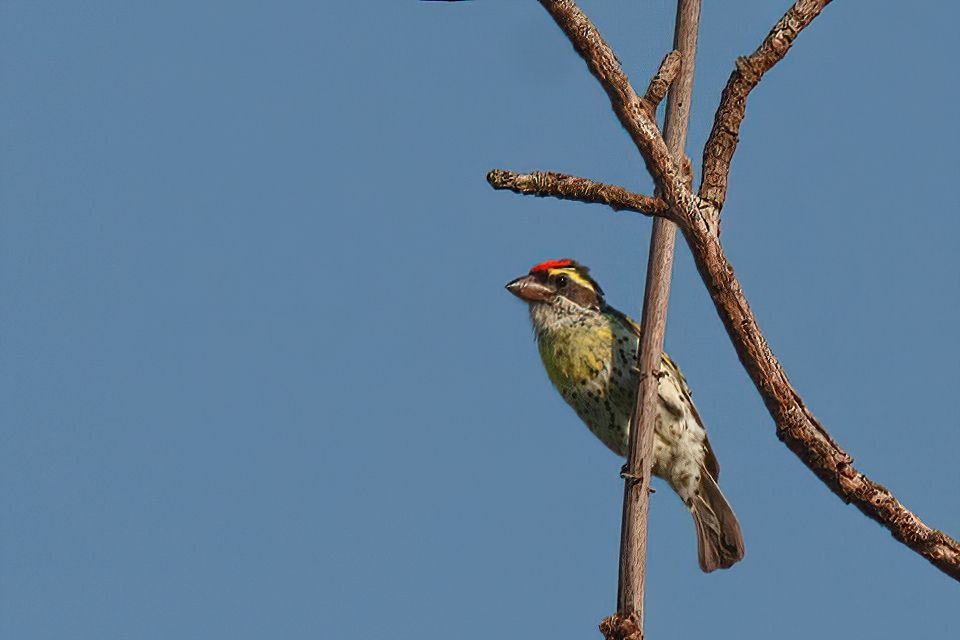
AMANO CHRISTIAN SCHOOL
CHITUNTA PLAINS
We birded the area on two occasions: in the evening when driving to Kalwelwa and in the late morning when leaving Kalwelwa. The first time, we immediately headed for the Bocage's Weaver colony at -11.519511, 24.362621. As this species normally breeds from August to November, we were not sure whether we would still find an active nest. The colony was indeed completely deserted upon arrival and no weavers could be seen. After some time, three Bocage's (2 males, one female) flew in from a distance and hid upon arrival almost directly deep in bushes along the river. They moved to some more distant bushes afterwards, in which they again disappeared rapidly. In general, they behaved very cryptic and were challenging to see properly.
Note that the colony can be reached more easily along the north of the small woodland (-11.516367, 24.367371), and not by trying to follow the river edge (we tried). It takes about 1hr to reach the colony from the bridge across the small stream where you park the vehicle (-11.504293, 24.379034).
We focussed on Short-tailed Pipit (the only species we missed in Kalwelwa) on our second visit. We birded the plains at the east side of the road from the bridge and quickly flushed a Short-tailed Pipit. We were able to follow and flush it several times, after which it each time remained motionless on the ground, occasionally allowing for some good views. A second bird was found closeby.
Highlights: Bocage's Weaver (-11.518706, 24.362054), Short-tailed Pipit (-11.499593, 24.381372)
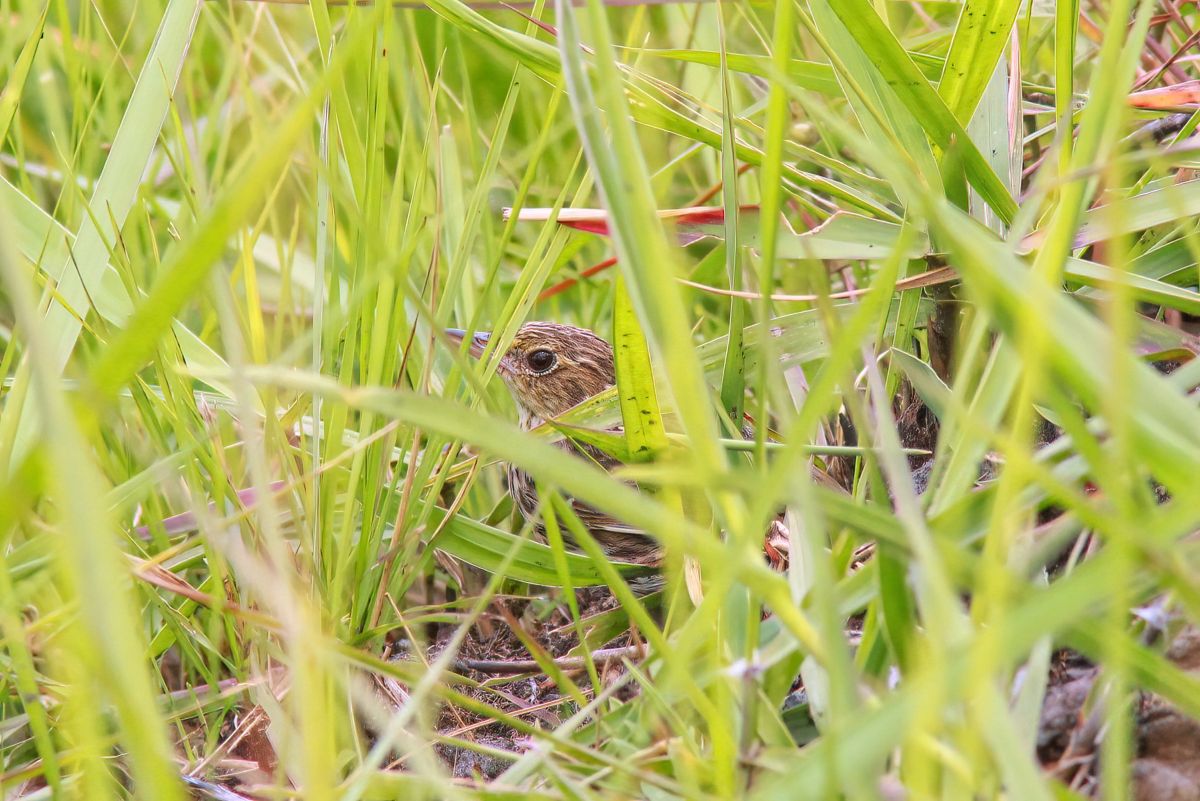
KALWELWA DEPRESSION
Birding the Kalwelwa area has only recently been made possible through Birding Zambia, who set-up a tented bushcamp in the area. A visit to the area should be arranged (well) in advance with them (see in the "Accommodation & Food section"). The tented camp is composed of a number of nice tents and a dining tent. From their camp, all the necessary sites are within (short) driving distance (max 10km away). Note that the camp is broken down during the rainy season as the area becomes virtually inaccessible.
To get there, in Mwinilunga follow the main road nordwards (in direction of Chitunta Plains) and take the turnoff at -11.521761, 24.412949. Follow the dirt road all the way along the Congolese border until you reach the Muwana settlement and turn right here (-11.40162, 24.64241)
You basically need to bird four sites:
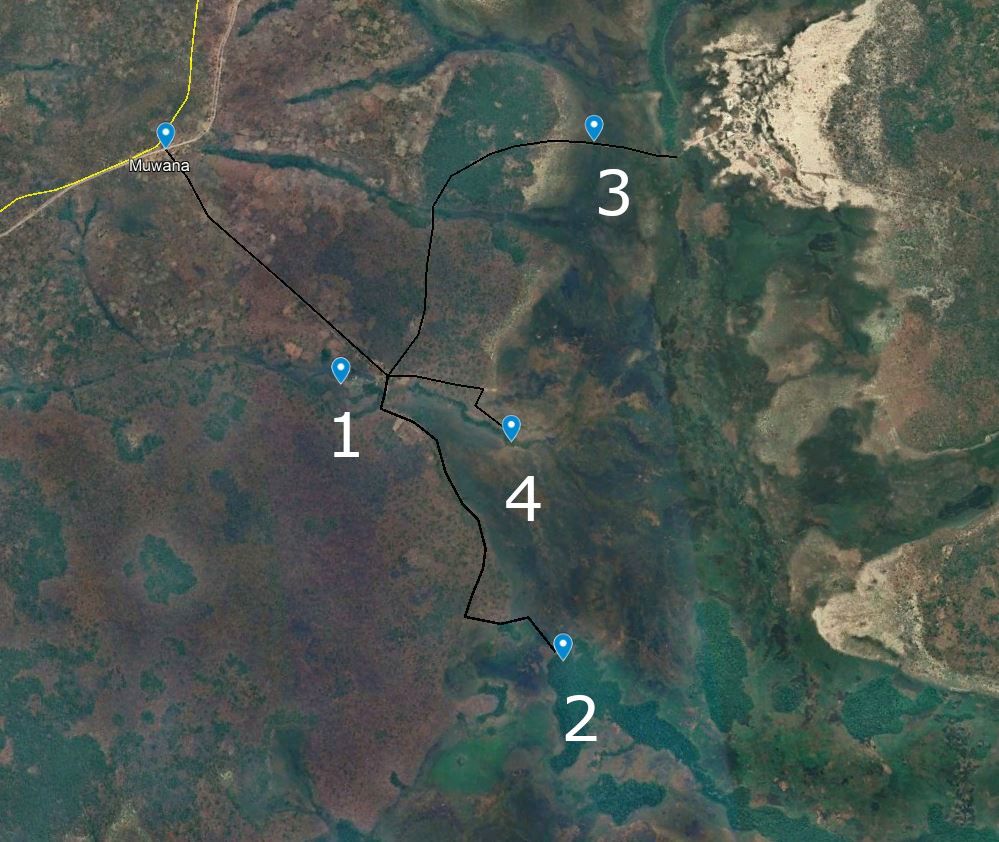
The plains and delta can be explored widely. The interior of the main forest can only be birded easily along a short trail of less than 100m to the stream (owl, thrush-babbler and kingfisher). Birding Zambia is planning to make a more extensive trail system in the (near?) future. The area around the main forest (dambos) and around the camp (dambos and Miombo) can be explored extensively.
An elaborate site guide with practical descriptions and target birds for each site can be obtained with Birding zambia.
We spent 3 nights in the area during which we divided our birding time relatively evenly across the four sites. We felt that this was sufficient time to connect with all our targets. We lost one (early) morning searching for the owl and thrush-babblers due to rains. We focussed on specific target species and did not try hard enough for the Bamboo Warbler or the Spot-breasted Ibis as they remain a long shot in Kalwelwa.
The owls proved relatively easy. We heard them calling spontaneously at the stream (White-bellied Kingfisher spot) at around 07:40 AM on our first morning 'recon' walk. On day 3, we were able to tape them in at the stream (White-bellied Kingfisher spot) iat this same site around 5am. They responded quite rapidly and remained vocal and active until around 07:30 AM. The thrush-babblers were vocal for only a very short period in the morning (first half hour of daylight). We were clearly on the late side for Black-and-rufous Swallow, of which we only saw one individual in between large numbers of (mainly) Barn Swallows.
Highlights: Vermiculated Fishing Owl (a couple, in the main forest, right at the WB kingfisher spot), Spotted Thrush-Babbler (at the edge of the main forest, around 20m in along the main trail at -11.450460, 24.669971), Blue Quail (two separate individuals flushed at this spot, at the seepage zone around the wetter part of the dambo at -11.4487, 24.6622), Striped Crake (twice 1 ex flushed in the dambo next to the main forest), Grimwood's Longclaw, Angolan Lark, Black-and-Rufous Swallow (one bird only among many other swallows/martins), Dambo Cisticola, Great Bittern (African race which is rare and little known - 2 birds flying around at dusk near the delta, probably one of these was seen near the main forest as well), Compact Weaver (2 birds seen fling by at the edge of the main forest), Bates's sunbird (near the camp), Bannerman's Sunbird (at the parking site for the main forest), Laura's Woodland Warbler (one bird), White-bellied Kingfisher (at the kingfisher spot :-))
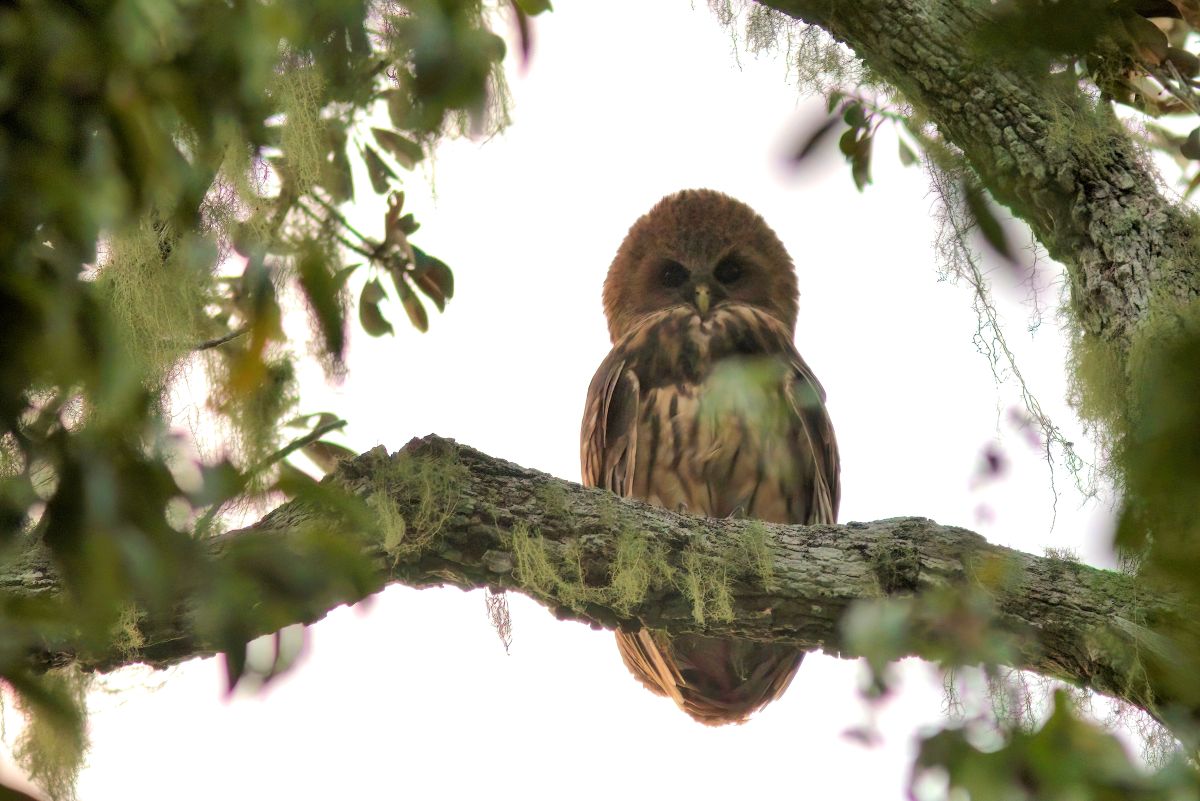
MUTANDA FALLS
Highlights: Bamboo Warbler (eventually a very responsive bird was found outside the lodge grounds at -12.394949, 26.250552), Black-faced Canary, Cassin's Flycatcher (next to the rapids, as expected), Bocage's Akalat (at the footbridge -12.391748, 26.246067).
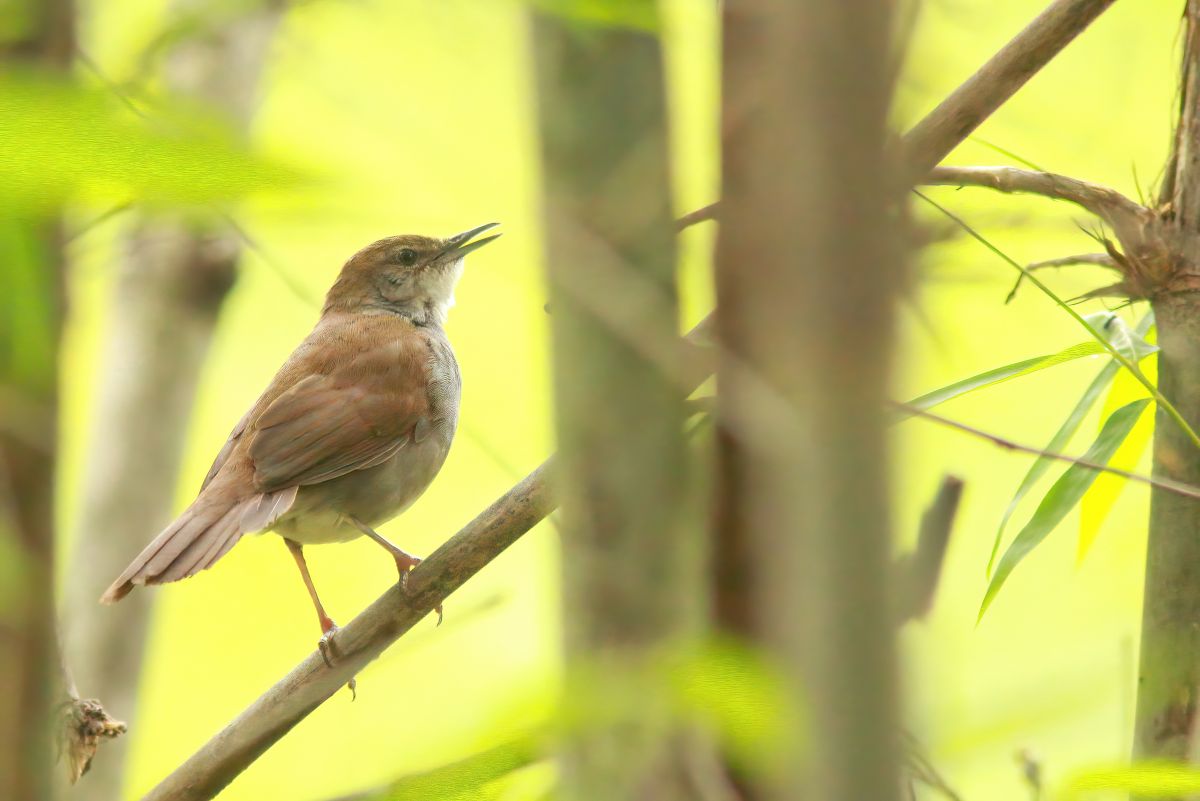
CHIMFUNSHI PARK
Highlights: Anchieta's Barbet (-12.436653, 27.428184), Böhm's Flycatcher (mixed species flock about the same place as the barbet), Black-eared Seedeater, Thick-billed Cuckoo (at a dambo -12.424867, 27.433974).
IMANDA FOREST
We entered the forest from an adjacent local farm, with the help of a local family. We parked our vehicle at their farm (-13.479189, 27.922417), and they guided us to the forest. To reach the farm from Mpongwe, turn right at -13.513613, 28.035066 to the St. Anthony's Mission. Just before reaching the mission and small settlements, turn left at -13.459166, 27.935002 and left again at -13.466471, 27.921459. Note that the road can be very muddy and challenging during the rainy season. We found a Batis pair after a short stroll inside the forest. Although they relatively quickly responded to tape, they were slow to approach and were extremely challenging to pinpoint and see as they remained high up in the canopy. The track in the forest can be very muddy.
Note that this is not a typical tourist site and visiting the forest requires passing through private farms. Be humble and respectful towards the local families. We gave the family k100 for guiding us to the forest.
We birded Imanda for a couple of hours en route from Kamfinsa (via Luanshya) to Forest inn.
There is a small Red-throated Cliff Swallow colony en route under the Masaiti bridge (-13.237189, 28.403913). Birds are present from at least August to November. During a brief stop now (mid-December), none were seen.
Highlights: Margareth's Batis (a pair at -13.489707, 27.933189), Cuckoo-finch (2 birds in the fields near the forest -13.485133, 27.928077), Laura's Woodland Warbler (at the batis site).
FOREST INN (MKUSHI)
We birded the woodland for a few hours one afternoon, but did not encounter anything noteworthy and generally just not a lot of birds at all.
MKUSHI AREA
While checking the water levels of some dambos in the vicinity of Forest Inn for flufftails, we bumped into a fairly nice patch of Miombo at -13.654267, 29.363984. The Miombo stretch bordered a rocky ridge and both looked promising, so we decided to spend the first hours of next day in that area. Unfortunately, all the dambos we were able to check were completely dry…
Note that a lot of dambos and forest patches in the Mkushi area are on private land and cannot be accessed freely.
Highlights: Miombo Rock Thrush (1 bird at -13.653903, 29.367992), Lazy Cisticola.
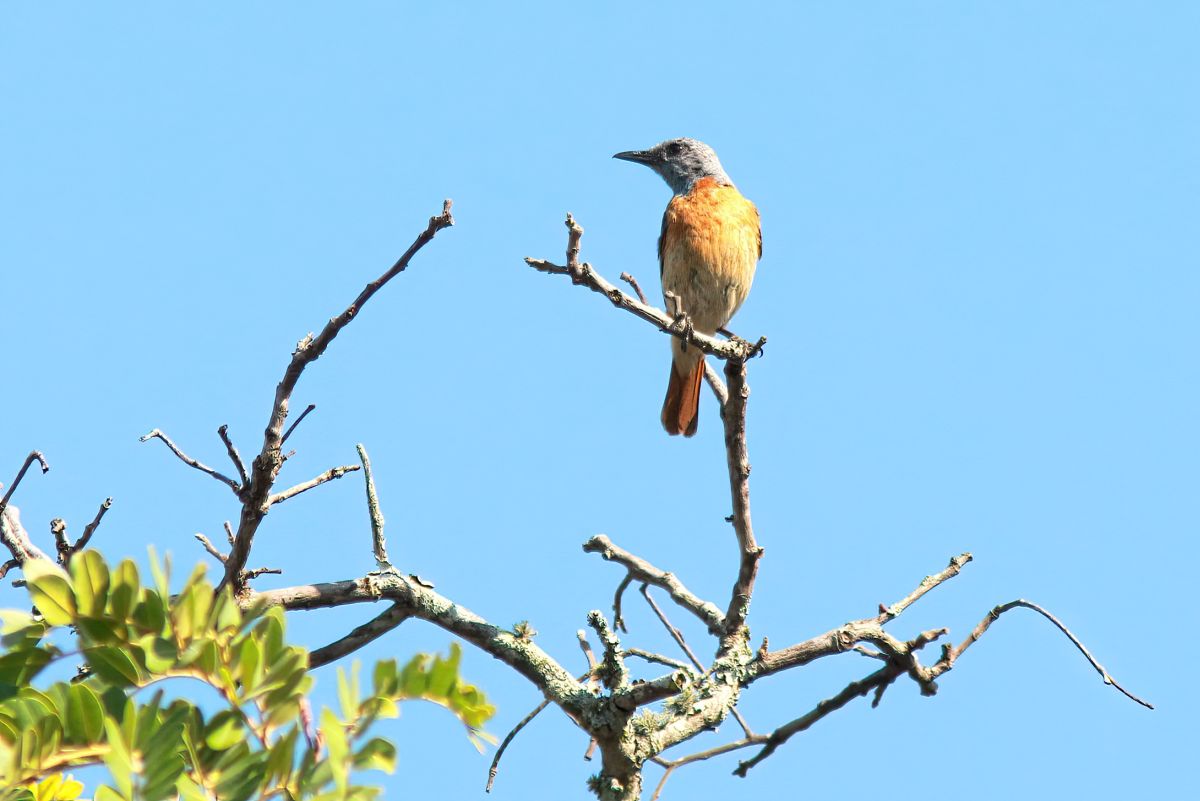
KASANKA NP
The park is most famous for the annual congregation of millions of migrating fruit bats between October and December. Yet, it holds an impressive bird list as well that includes a good set of Miombo-restricted species as well as a number of rare or range-restricted species.
There is one fully catered lodge at the park's headquarters (Wasa), one self-catering lodge (Luwombwa) and several neat and well-equipped campsites inside the park (including pontoon campsite). The park is open throughout the year, but some parts of the park become inaccessible during the rainy season. The river Kasanka (at pontoon, splits the park in an eastern and western part) can become unpassable during very high water levels. It is prudent to always check accessibility in advance as water levels fluctuate during the rainy season. As it is a national park, you technically need to be accompanied by a game scout when exploring the woodlands on foot. Although numbers are low, there are elephants and buffalos around, so be aware!
This was the only National Park on our itinerary. As we picked up most Miombo species already, and still planned a visit to Mutinondo to pick up some of the remaining Miombo and wetland (flufftail, owl) species, we only birded one (late) afternoon and morning in the park.
Kasanka is a very nice place to visit and looking back, we should/could have added an extra day here. Birding the Miombo parts was rewarding. The lakeside view right from the balcony of the lodge (Wasa) added some extra species for the trip list. The pontoon area did hold the day roosting Pel's Fishing Owls. And witnessing the spectacular exodus of the 10.000.000 fruit bats was one of the best possible sundowners one could think of. The hide-out near the pontoon camping ground is also reliable for Sitatunga, which is hard to find in other parts of Africa.
There are a number of different habitats that all have a number of interesting species on offer. The map below gives an overview of some of the good birding areas. They are further described below.
Note that, at the time of writing, only Pontoon and Kabwe campsites are maintained. A self-catering tented camp is seasonally (bat season) set-up at Kapabi. Luwombwa is a self-catering lodge, Wasa is fully catered.
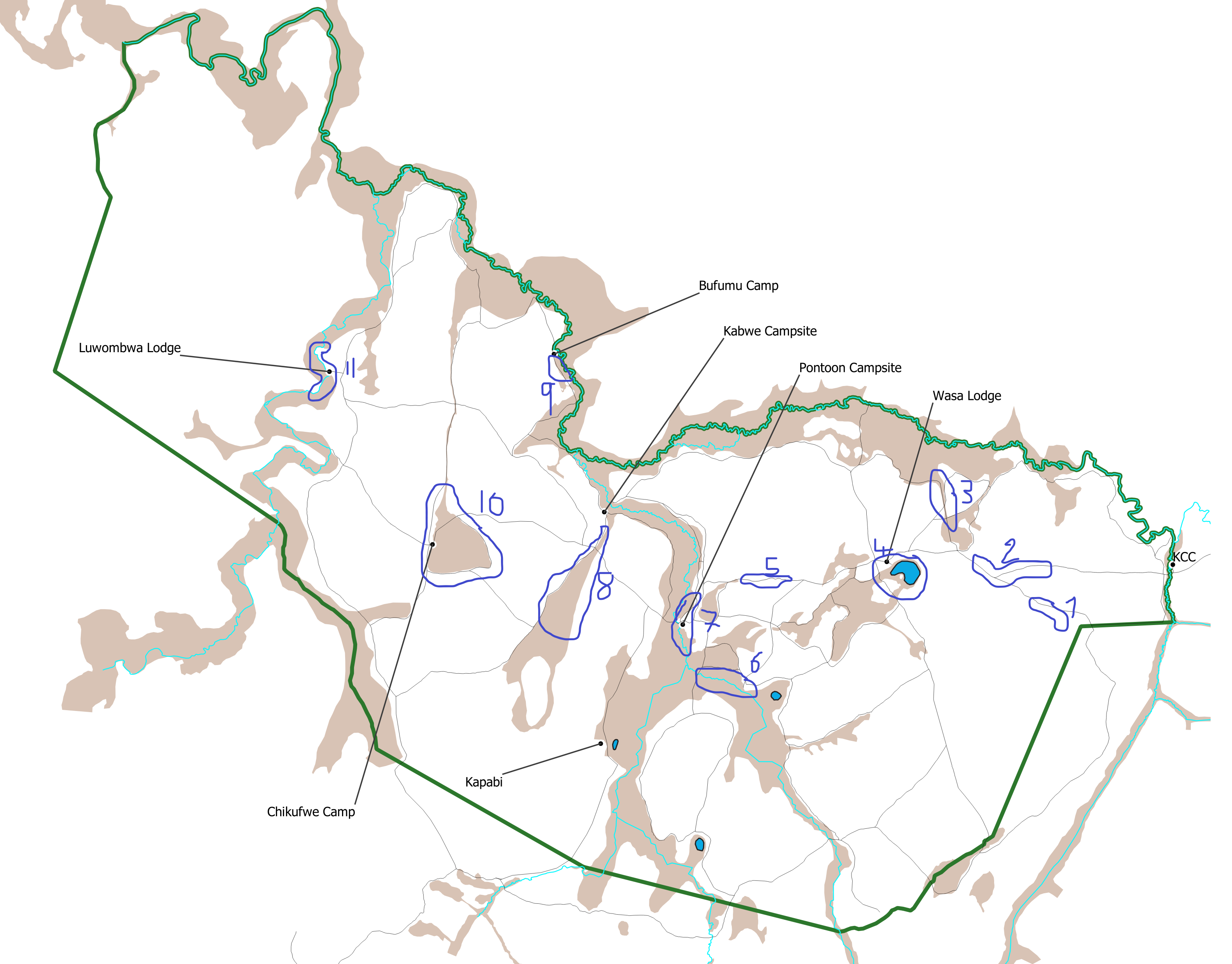
Mpululwe Hill is the highest area of the park. The Miombo woodland in this area has plenty of rocks. Good Miombo birding, particularly for species with affinities to rocky areas such as Striped Pipit, Familiar chat and Miombo Rock-Thrush. For the latter, it might even be the best site in the park.
Mpululwe Hill is dry and accessible throughout the year. The turnoff to the track along the main entrance road is subtle and can easily be missed (-12.558603, 30.325048). The track is not often used and can be obstructed by trees pushed over by elephants, so come prepared.
2. Main road around Mpululwe Hill junction (-12.558603, 30.325048)
This area is situated along the main entrance road between the gate and Wasa lodge and consists of Miombo woodland interspersed with several open areas. This makes the area structurally very diverse and productive, particularly in the morning hours when birds come to the edges to warm up. Good for typical Miombo species such as Black-eared Seedeater, Black-necked Eremomela, Long-tailed (Tabora) Cisticola, Anchieta's Sunbird, Miombo Tit, Böhm's Flycatcher etc.
3. Airstrip area (-12.536843, 30.309889)
The airstrip is cut through Miombo woodland and is surrounded by large, seasonally flooded plains at both ends. During the rainy season, the area attracts species associated with wet grasslands such as quails, buttonquails and Locustfinches. During the dry months, pipits, larks and other open-country species are common. The woodland edges are attractive for typical Miombo species as well.
Accessibility changes throughout the year. The center of the airstrip remains accessible year-round, but both ends flood completely during the wet season (but can still be explored on foot). During the dry season, both ends slowly dry up and are almost completely dry by June. The lowest parts in the north remain damp during the dry season.
4. Wasa Lodge area (-12.554627, 30.295770)
Wasa lodge is built at the edge of lake Wasa, a year-round open water lake. The lake is surrounded by Miombo woodland in the north, east and south, and gradually changes into open, seasonally flooded grasslands in the west. Water levels fluctuate greatly throughout the year. The lake holds a number of typical wetland species including White-backed Duck, Pygmy Goose and Lesser Jacana. Striped Crake has bred in the extensive, flooded grassland system just west of the lake.
The lake can easily be scanned from the lodge, although waterfowl may hide in the dense vegetation in the southern sector of the lake and become invisible. Depending on the water levels, it is possible to circumvent the lake and explore the adjacent grasslands on foot. Make sure to arrange a game scout as hippos and elephants do pay frequent visits to the lake!
5. Main road to pontoon (-12.560016, 30.258152)
The woodland in this area is high and has an open understory and is good for Souza's shrike and Arnot's chat. It is accessible throughout the year.
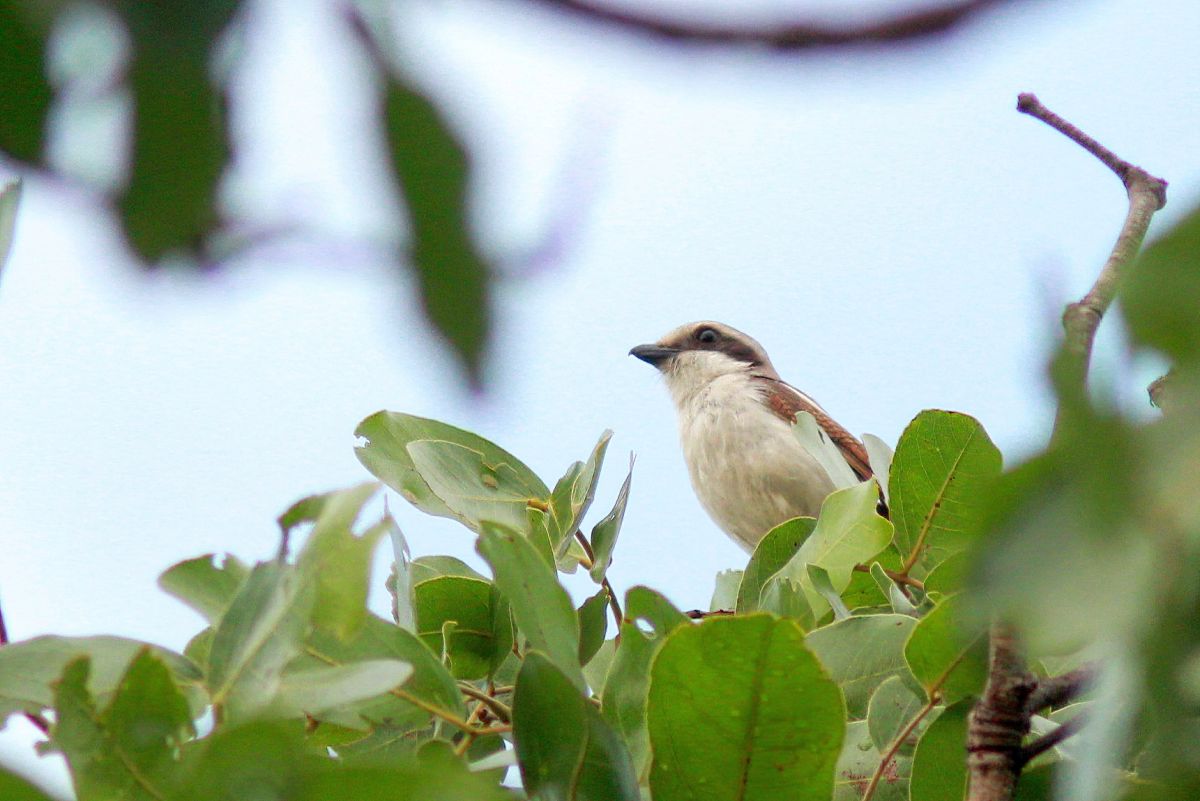
The bat forest is a large mushito (swamp forest) and the temporary home to millions of bats during the bat migration. The forest itself holds typical mushito species including Bocage's akalat (western hide) and purple-throated cuckooshrike. The edges of the forest have resident Bohm's bee-eaters. The forest is surrounded by large marshes and floodplains.
No trails go through the forest, but birding is rewarding around Fibwe camp and along the northern edge of the forest. The area floods almost completely during the rainy season, but remains accessible on foot. The Fibwe Camp is a scout camp, so no public camping here.
7. Riverine forest along Kasanka river and floodplain & Pontoon campsite (-12.573288, 30.234607)
The riverine forest bordering the Kasanka floodplain at pontoon (although still referred to as such, this is not a pontoon anymore but a bridge) is most interesting for the resident pair of Pel's Fishing Owl. They can be heard at night and seen on day roost (ask caretakers), although they only seem to be present during the dry season and the early wet season. Other interesting species known from the area are Grey Waxbill, Böhm's Bee-eater and Hartlaub's Babblers (try the Sitatunga hide).
Just across the pontoon you drive through the Kasanka floodplain. The floodplain attracts large numbers of stork, plovers and lapwing including Senegal Lapwing, of which the Kasanka floodplain is one of the best sites for this species in Zambia. Hartlaub's Babbler can also be found in the reeds.
The campsite and sitatunga hide at the eastern side of the river are accessible year round. The bridge and floodplain can be completely flooded and inaccessible during (large) parts of the wet season. A 4WD is, except during the driest months, needed when crossing the pontoon.
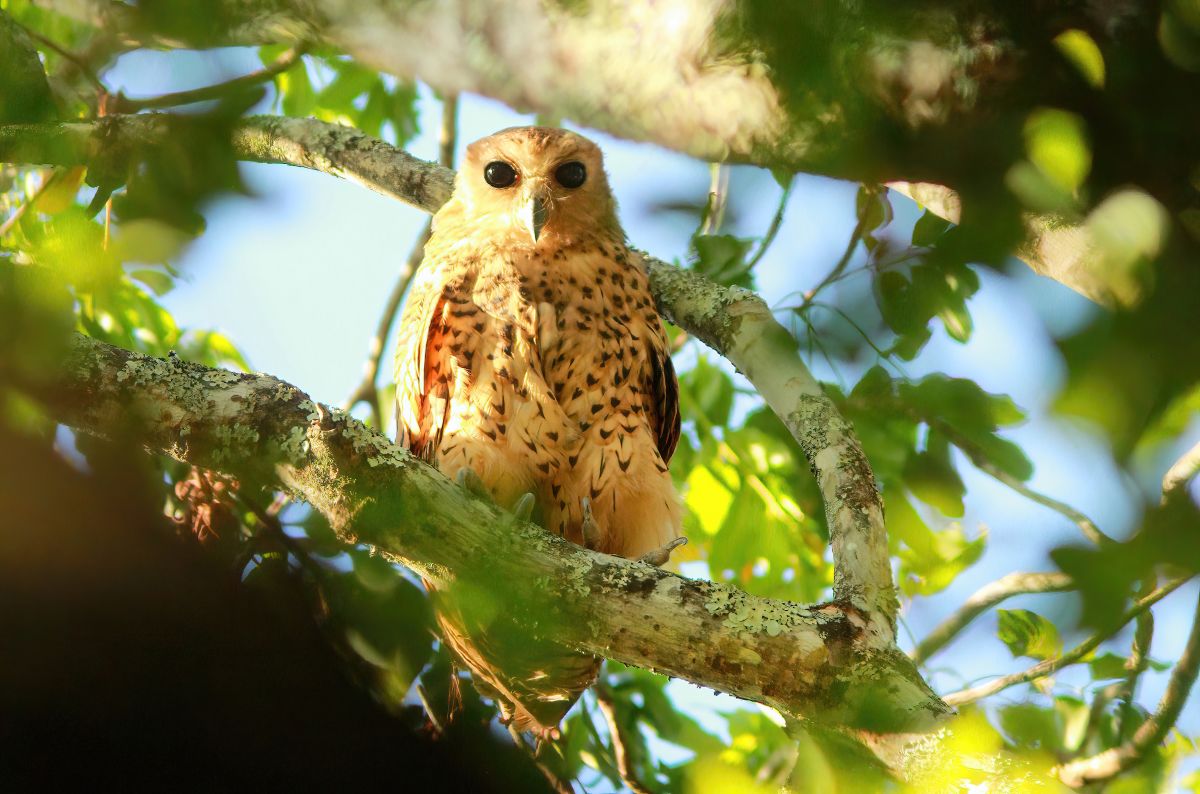
Dambo that is crossed by the main road going to Luwombwa. Good for flufftails, with sightings of Chestnut-headed Flufftail.
9. Bufumu Forest (-12.497564, 30.196330)
A dry evergreen forest (or Mwateshi), characterized by a unique two-layered vegetation structure. Home to the 'big tree'. African Pitta has frequently been sighted here, although it is unclear whether these are merely passing individuals or whether they breed in the forest.
Bufumu can be reached using a track that diverts from the main road between pontoon and Luwombwa. It is accessible year round (Kasanka river crossing at pontoon permitting). It takes about 45 min to reach Bufumu from Wasa lodge.
10. Chikufwe Plain (-12.551136, 30.160804)
A large seasonally flooded plain in the western part of the park. Can be circumvented year-round (but ask advice before) and crossed during the driest months. The northern part of the plain is wet year-round. Good for (button)quails, fluttails (Streaky-breasted Flufftail late in the wet season) and African Grass Owl.
The small grassland corridor leaving the plain in the northern direction (-12.527343, 30.165778) cuts through some high Miombo. There seems to be a resident Racket-tailed Roller pair, although they can be seen throughout the park as well such as along the entrance road (sites 2 and 5).
The plain can be reached and circumvented year round (Kasanka river crossing at pontoon permitting), but the road cutting through the high Miombo at the northern end (Racket-tailed Roller) might be flooded. To reach the plain, drive straight at the main Luwombwa junction.
11. Riverine forest along Luwombwa River (-12.501554, 30.131120)
The self-catering Luwombwa lodge is situated at the bank of the Luwombwa river. Although the trees are far less impressive than along the Kasanka River, similar species can be seen including Pel's Fishing Owl and Böhm's Flycatcher. In addition, White-backed Night Heron nests along the Luwombwa river and might be found at day roost from a canoe.
Luwombwa lodge can be accessed year round (Kasanka river crossing at pontoon permitting).
Highlights: Pel's Fishing Owl (day roost pontoon at -12.572145, 30.234123), Böhm's Bee-eater (at Fish Owl site), Hartlaub's Babbler (floodplain Kasanka at -12.572349, 30.231203), Souza's Shrike (picked-up in a mixed species flock at site 5 near -12.559981, 30.261466), Lesser Jacana, White-backed Duck (the latter two from the lodge).
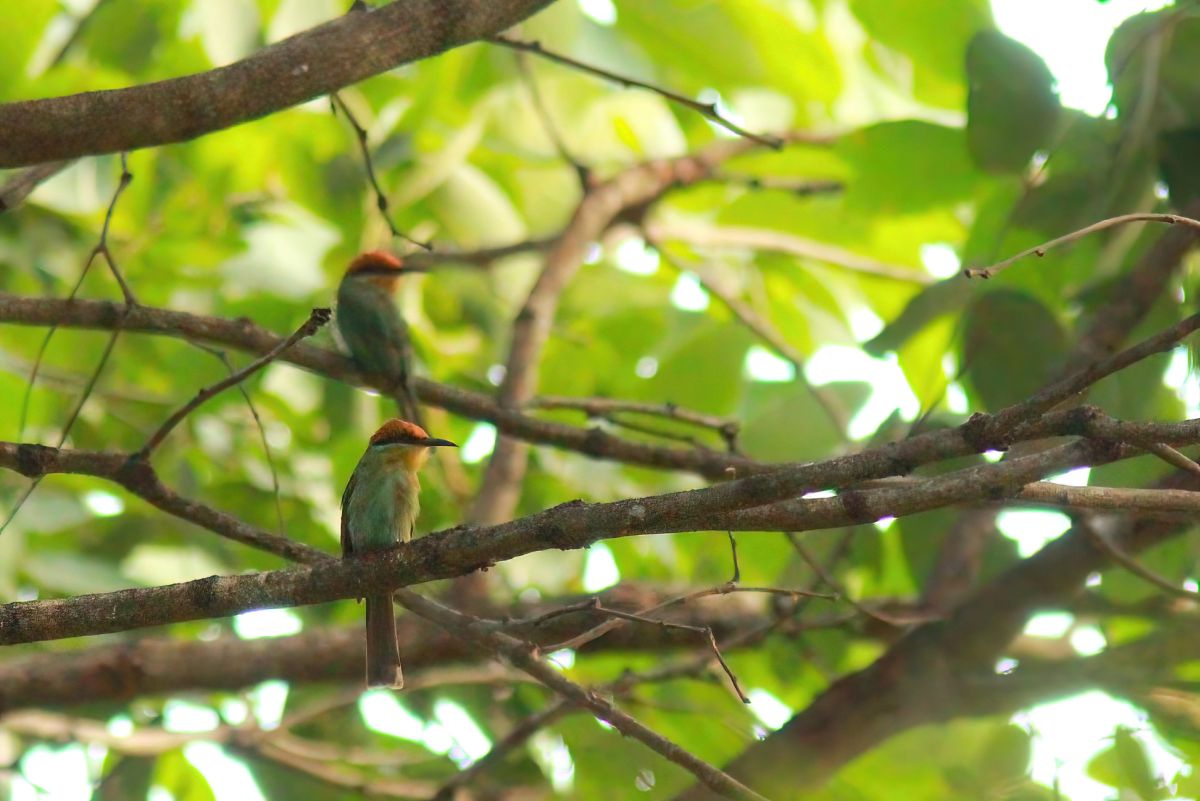
LUAPULU RIVER BRIDGE & PLAINS NORTH
Highlights: Katanga Masked Weaver and Luapula Cisticola (both at the bridge), Desert Cisticola and Long-tailed Widowbird (at the plains).
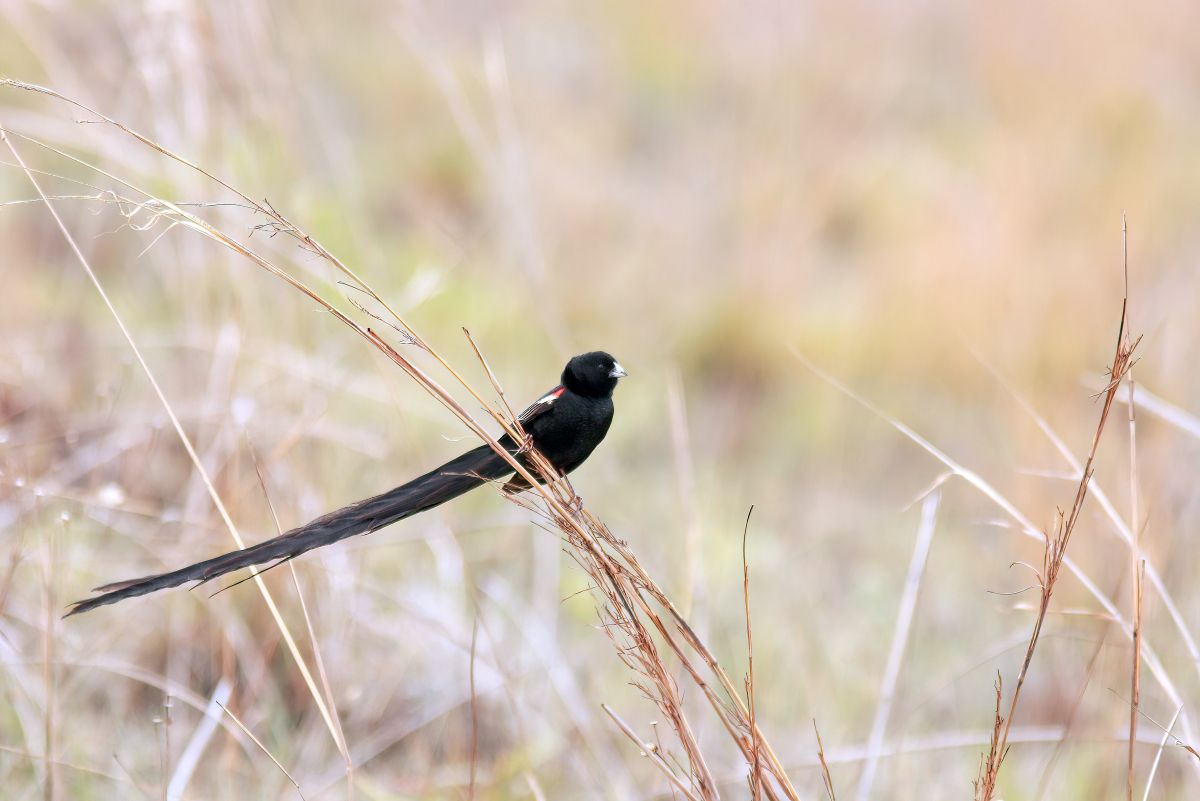
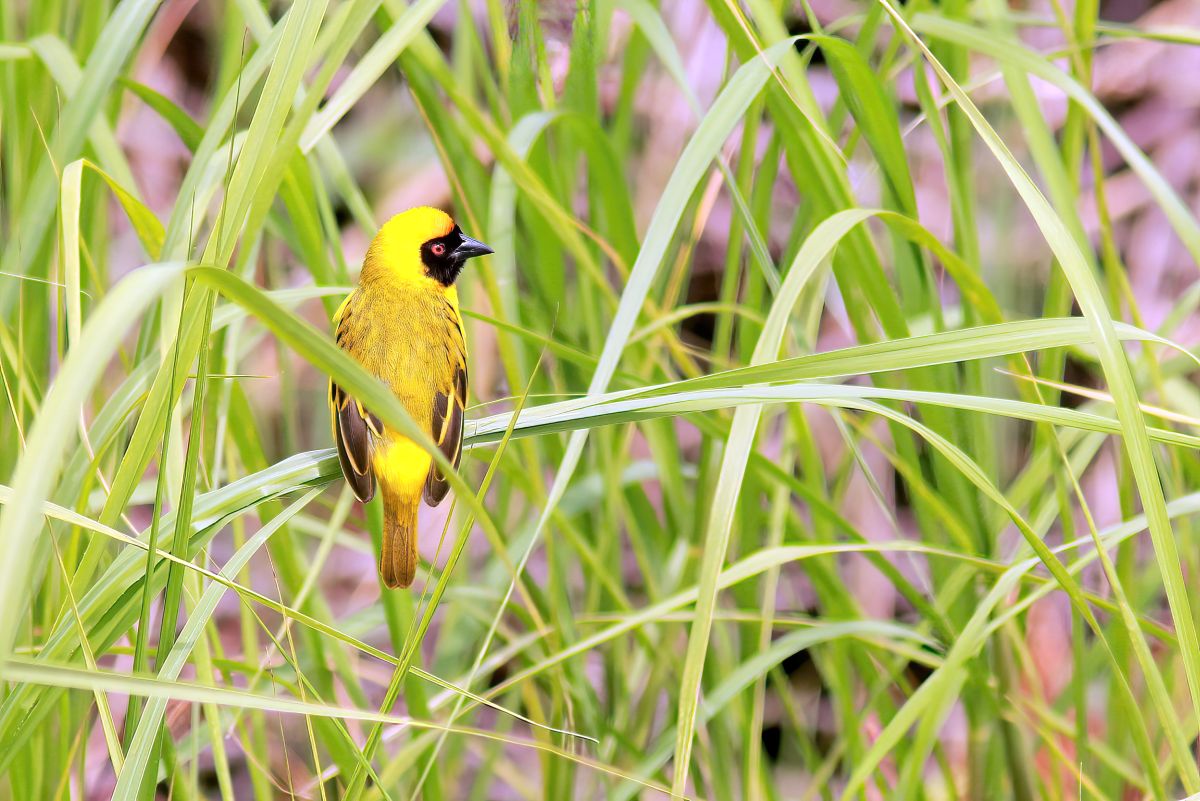
NNCHELENGE PAPYRUS MARSH (LAKE MWERU)
We birded one of the swamps 'arms' that is bisected by the road (causeway) to Nchelenge (-9.508714, 28.735561) for a brief evening and a couple of hours during the next morning. The Papyrus Yellow Warblers were seen very briefly (not vocal) and not cooperative in the evening. The next day, it took some time but several were eventually seen and heard.
Highlights: Papyrus Yellow Warbler, White-winged Warbler, Anchieta's (Marsh) Tchagra, Katanga Masked Weaver, African Rail, Great Swamp Warbler (all at the very same site).
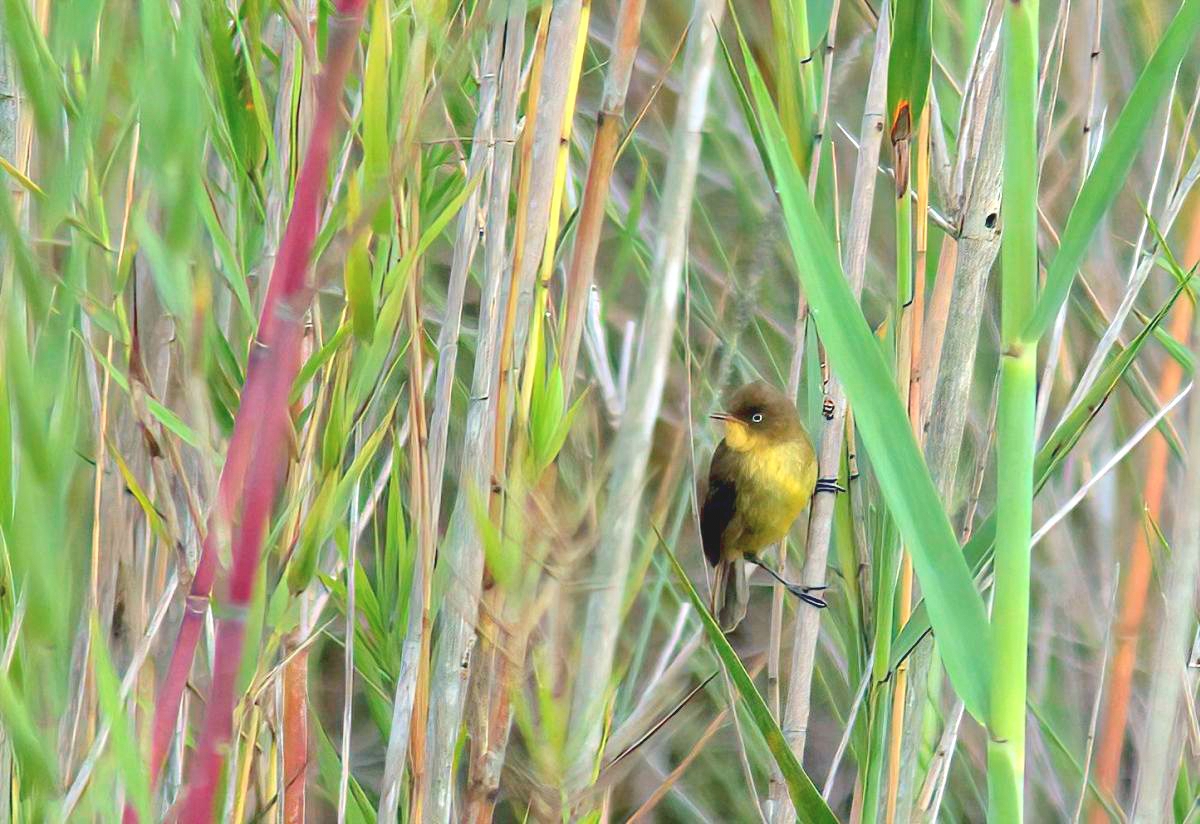
OUSTALET'S SUNBIRD SPOT
The road also meanders through a hilly area with nice Miombo woodland (e.g. along the Ntumbachushi falls -9.851108, 28.942394) that looked promising for Whyte's Barbet.
Highlights: Oustalet's Sunbird (1 male at -10.317311, 30.753320)
CHISHIMBA FALLS
We spent the night at the campsite and birded the area (entrance road + hiking tracks to the falls) for one morning.
Highlights: Whyte's Barbet (we had a group of these barbets literally during our morning coffee in a fruiting tree at the campsite at -10.108111, 30.917686, and observed probably the same group later that morning at other sites along the falls as well).
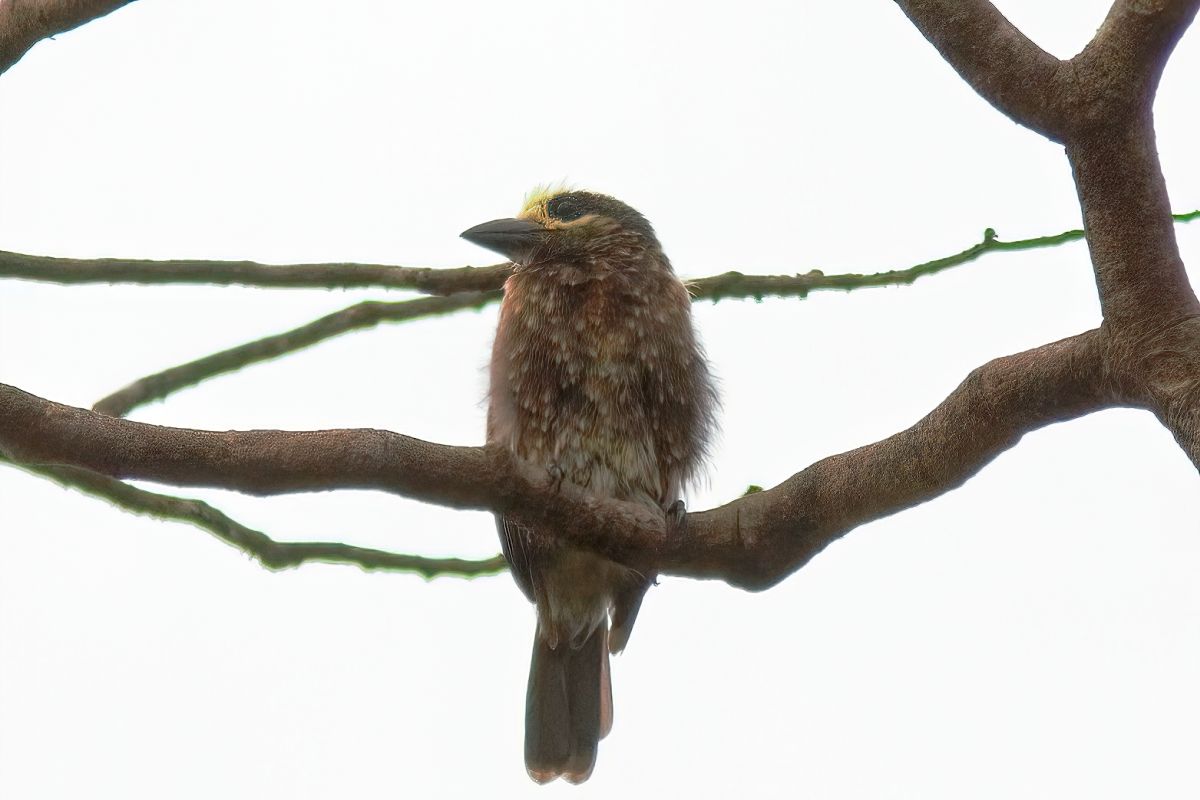
MUTINONDO WILDERNESS
The area is easy to reach from the Great North Road along a 25km dirt track (turnoff at -12.379955, 31.098170). The area itself has well-maintained tracks that can be explored on foot independently due to the absence of any large, dangerous game. The main lodge is located in the center of the area and consists of several chalets (fully catered only) and a well designed campsite with shelters and one 'campsite room' (self/fully catered). There is a self-catering lodge/camp with basic facilities (Kankonde) about 10km away from the main lodge which is further away from the target birding areas.
The sites mentioned below are some of the highlights. They are convenient to reach and relatively close to the main lodge and campsite. Although all sites can be hiked to (max distance 5km), a short drive might make sense for more distant sites. Note that good birds can be found at more distant sites and along other trails as well and the selection below does not give an exhaustive overview.
We birded Mutinondo Wilderness one evening (Big Chipundu dambo + airstrip), one full day (Road along Kabasano dambo + main lodge + Big Chipundu) and one short morning (long drive to Chisamba). We were lucky and found our targets rapidly, whilst we did not need to look for Anchieta's Barbet. As Anchieta's Barbet and Bar-winged weaver can both be a hit-or-miss, an extra night at Mutinondo might be necessary.
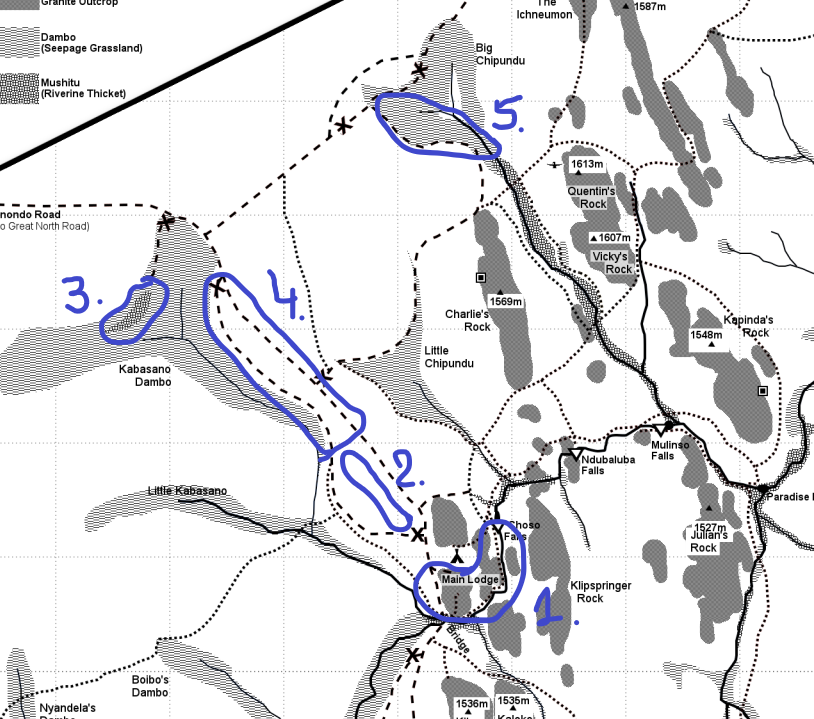
The rocky outcrop at the main lodge and at the back end of the campsite (campers rock) is a good site for Eastern Miombo Sunbird. Check the area around the dining and in-between the chalets. Anchieta's Barbet is attracted by the fig tree above the dining when it is fruiting, but is not seen in this tree during the rest of the year. In 2021 the fig tree was in fruit (with almost daily sightings of Anchieta's Barbet) from early March until the end April. African Finfoot can be found on the river (Musamfushi) at the base of the rock between the bridge and Choso falls (river walk). The general area is also good for Shelley's (Whytes) Francolin (generally calling at dusk). Striped Pipit is another interesting bird.
2. (abandoned) Airstrip (-12.451196, 31.284546)
Reliable site for Pennant-winged Nightjar (September to December). Convenient to drive through en route back from Big Chipundu (using the track along Kabasano dambo) in the evening. The turnoff from the main road is at -12.450782, 31.289719.
3. Kabasano Mushito (-12.431443, 31.266472)
Kabasano is a big dambo with a large Mushito patch at the end. The mushito and surrounding area is an interesting site with good bird activity. Look for Anchieta's (and other) Barbets, Black-bellied Seedcracker, Hartlaub's Babbler, Reichard's Seedeater, Bar-throated and Brown-headed Apalis and White-tailed Blue Flycatcher. There is a track going to the mushito from the main entrance road, about 5km from the main lodge (junction -12.424613, 31.267649). There is a (not always well maintained) hiking trail around the mushito, from which you can go in. Very wet in some parts, even during the dry season.
4. Entrance road + road along Kabasano dambo (-12.436804, 31.272894)
The entrance road and the road along Kabasano dambo is good for Miombo birds, including Bar-winged Weaver, Böhm's Flycatcher, Southern Hyliota, Anchieta's & Western Miombo Sunbird & Miombo Tit. Look for mixed-species flocks. The stretch along the dambo between the end of the airstrip (-12.448372, 31.280888) and a small single track back to the entrance road (-12.442268, 31.28061) is a good site for Bar-winged Weaver, where they are known to nest from September to December (see exact coordinates below). Check the anthills with evergreen elements and fig trees along the dambo road for Anchieta's and other barbets.
The loop along the dambo starts at the end of the airstrip (see coordinates above) and connects back to the entrance road at -12.429553, 31.272191. Don't forget to check the dambo for Locustfinch, (button)quails and flufftails.
5. Big Chipundu dambo (-12.420189, 31.288629)
Big Chipundu is a reliable site for African Grass Owl (when the dambo has not been burnt recently) and Chestnut-headed Flufftail. For the owl, try taping at dusk from within the dambo. For the flufftail, try the area at the southeastern outlet. While Red-chested Flufftail likes really wet areas with ankle-deep (and deeper!) water, Chestnut-headed Flufftail can be found at less wet sites slightly higher up.
The dambo can be reached from two sides: from the top and from the outlet (reached using the track along Little Chipundu and Charlie's Rock). You can only drive between the top and the outlet during the late dry season, as the track goes along the dambo edge.
The stretch of evergreen riverine forest at the outlet of Big Chipundu has Bocage's Akalat and Laura's Woodland Warbler (-12.425554, 31.296992). This can be accessed on foot from the track passing Charlie's Rock (leave your car at -12.426449, 31.293199).
Highlights: Bar-winged Weaver (a pair at -12.444105, 31.280773), Chestnut-headed Flufftail (one bird flushed and seen well at Big Chipundu at -12.419514, 31.293291), African Grass Owl (Big Chipundu at -12.418611, 31.289432), Böhm's Flycatcher (right at Bar-winged Weaver site), Pennant-winged Nightjar (airstrip), Eastern Miombo Sunbird (a female around the main lodge - they prefer the edges around and on top of rocky outcrop areas, whereas Western will be found in the woodland, e.g. along the entrance road), Southern Hyliota (at Bar-winged Weaver site), White-tailed Crested Flycatcher (rare in Zambia at -12.448727, 31.294340).
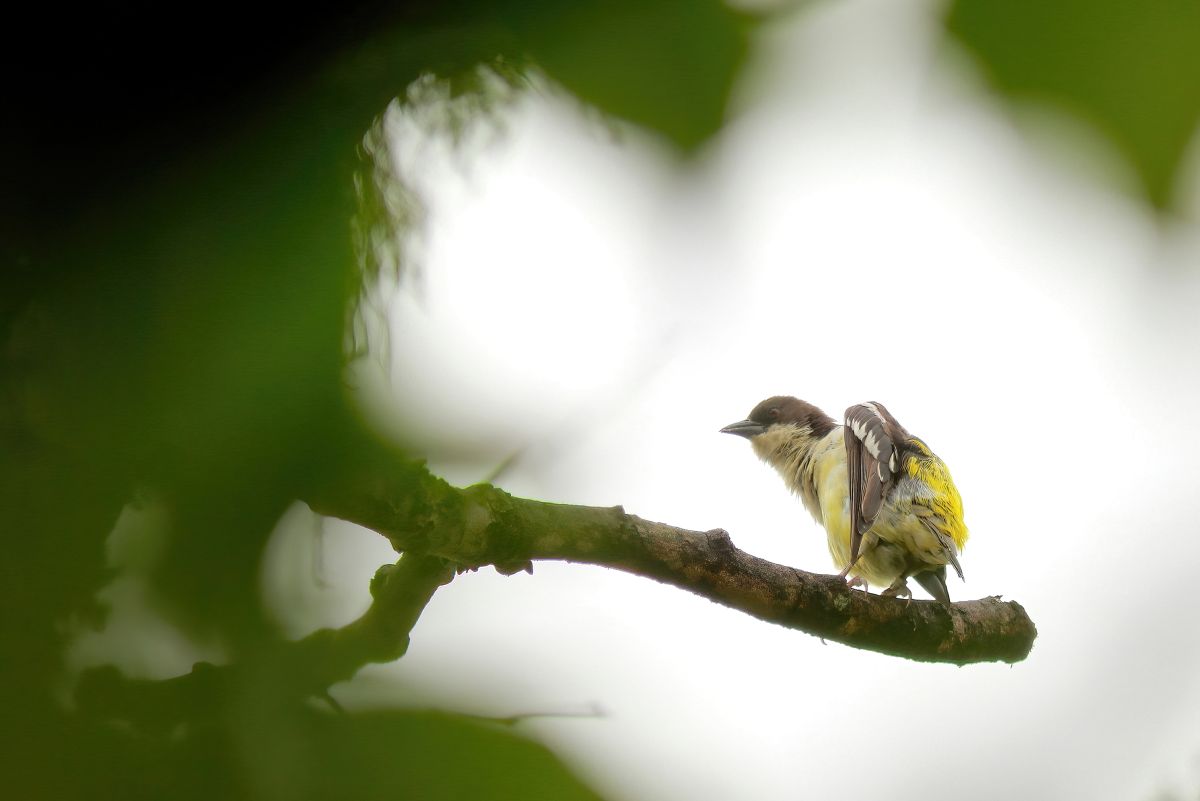
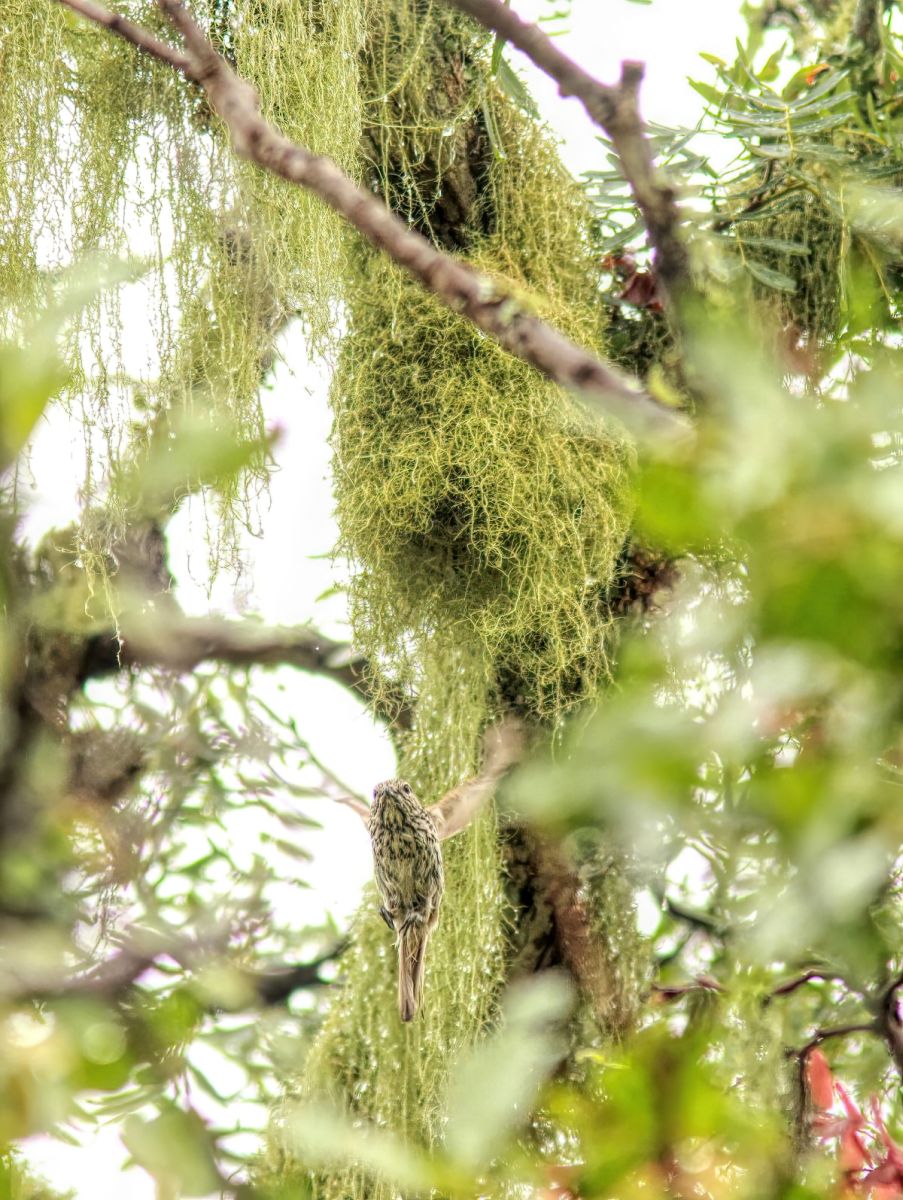
nesting in an old BW Weaver nest
CHISAMBA AREA
We birded the area one morning and surprisingly easily found a group of them along the main road. Later on we tried our luck in a nearby area where recently a Zambezi Indigobird had been reported. Alas, we only found some Purples...
We were based in the Fringilla Lodge (-15.006013, 28.154800) and did a bit of birding here as well. The scrubs yielded some extra tip list species (seedeaters and migrants). The slaughter waste (of the farm) is provided as a snack for the vultures which were attracted in good numbers.
Highlights: Chaplin's Barbet (a group of 5 very responsive birds at -14.979111, 28.307277).
GWABI RIVER LODGE (CHIRUNDU)
The main birding is done in the thickets near the lodge, most notably just along the entrance road. A specialized bird guide can be hired and he/she will bring you to the breeding area of the pittas. However, at the time of our visit, pittas had been heard before, but there was no active 'lek' known and no hide was put up (yet). The charge for a 'pitta guide' is set to 50 USD per person. Eventually, 3 pittas were found by other birders we met and were successfully twitched (thanks guys!). One important remark: the lodge tried (unsuccessfully) to charge us the 50 USD per person just for birding on our own along the entrance road the following morning as well, which felt like a real rip off.
One afternoon, we enjoyed a laid back boat cruise on the Kafue and Zambezi River looping around Kanyemba Island (-15.94627, 28.92338). It was some relaxed birding, but no real highlights were seen even though the guide/boatmen was teasing us with some species...
The confluence of the Kafue and Zambezi Rivers was only shortly explored. Nothing noteworthy was encountered there.
Highlights: African Pitta (3 displaying birds along the entrance road at -15.958668, 28.856706), Livingstone Flycatcher (pitta site).
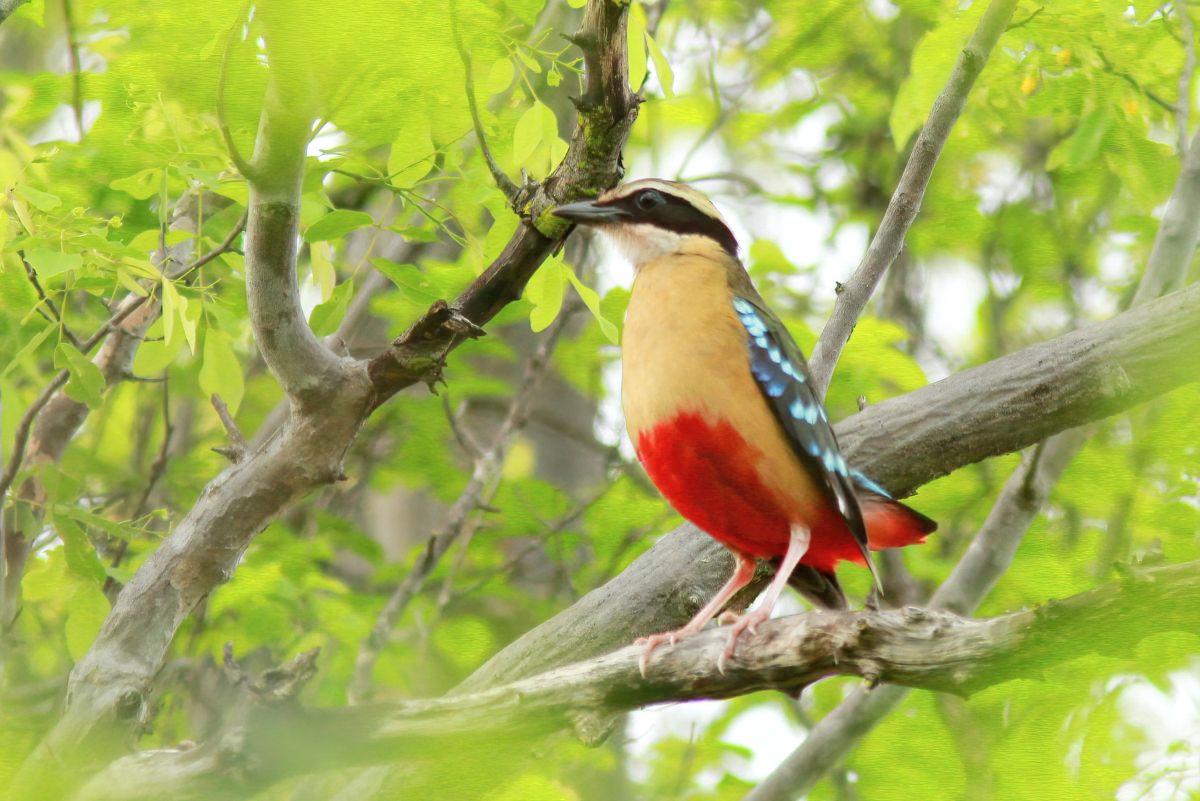
KASISI MISSION
We parked our vehicle at the gate (-15.263511, 28.474477) and birded the track eastwards along the fence. We also briefly checked out the dam (-15.260817, 28.469526) but not much was seen there.
CHAMBA VALLEY
Mweru-Mwantipa, Nsama and Mbala were initially included in a 'great northern loop' after our visit to Lake Mweru. Due to less time available then initially planned, we needed to cut this loop short to maximize Pitta ops in the Zambezi valley.
MAVUNDA FOREST
About 2hr south of Mwinilunga town lies Mavunda forest, which is a type of dry evergreen forest called Cryptosepalum. It holds two target birds namely Perrin's Bushshrike (Four-colored/Gorgeous split) and Margaret's Batis. The forest has been slowly cleared away from the road. Both birds can be seen at -12.436013, 24.187219, where good forest still reaches the main road. Not visited as it involved an extra day in our itinerary whilst we could (and have) see(n) the Batis in Imanda forest (almost en route) and Perrin's Bushshrike in Angola.
MWERU-MWANTIPA
African Pitta breeds in the gullies and thickets along the D817 towards Kaputa in this general area: -8.600376, 29.583550. After Lake Mweru, we wanted to continue and try the Pitta here first, with Zambezi Valley as back-up. Changed plans due to a shorter available timeframe and wanting more time in the valley to ensure Pitta was seen.
ESCARPMENT NORTH OF NSAMA
Babbling Starling can be found just north of Nsama along the road at -8.802428, 29.928863. This site could have been conveniently included in the Northern loop after Mweru Mwantipa. Not visited due to earlier mentioned shorter available timeframe.
MBALA AREA
The weaver occurs along the Saisse river at the border with Tanzania. A breeding colony south-east of Mbale at -8.928774, 31.730342. The area is generally also good for Oustalet's sunbird. Try for instance Umani pans just south of Mbala at -8.920419, 31.357664. This site could have conveniently been included in the Northern loop after Mweru Mwantipa and Nsama. Not visited due to earlier mentioned shorter available timeframe.
KAFUE NP - NANZHILA PLAINS
Nanzhila plains, in the southern sector of the Kafue NP is the most northern place where Black-checked Lovebird can be seen. The floodplain at -16.206829, 25.997217, just north of the Nanzhila plains camp is a good site.
This was planned as a 3-day extension loop from Lusaka, with a return via Choma as follows: enter the park from Itezhi-Tezhi (Musa Gate), drive through the plains, exit south-east gate of the park (Dundumwezi Gate) to Choma for Shelley's sunbird and back to Lusaka. Overnights at Itzehi-Tezhi and Choma. Nanzhila's plains camp (-16.279055, 25.918035) accommodates campers at their campsite (adjacent lodge is high-end), but closes during the rainy season.
CHOMA AREA
There are a couple of well-known birding sites in the larger Choma area such as the Bruce-Miller farm (-16.641971, 27.002008) where, besides Chisamba, Chaplin's Barbet can also be reliably spotted. For us, Choma was of interest for Shelley's Sunbird (-16.797348, 26.951896).
RUFUNSA GMA
About 3hrs drive east from Lusaka lies a good (the closests?) site for Boulder Chat. Although possible along the great east road (-15.066768, 29.749031), there is a conveniently located campsite called Chikwenya (at -15.110538, 29.765427) turnoff from the tar road at -15.060613, 29.728909). The campsite is situated within a gorge, with boulder chat just a short walking distance away at -15.106985, 29.765708. Check with Tulukani Adventures to stay at the campsite and for instructions. Interesting note is that African Pitta has also been seen at the campsite grounds.
From a global birding perspective, most interesting for Lilian's Lovebird (both North & South parks) and Babbling starling (North park only). Not considered as these species can be seen elsewhere. Note also that accessibility of South Luangwa is limited (only at elevated roads), and North park closes (not accessible at all) during the rainy season.
Nyika NP:
Lots of interesting target species, but ideally needs to be accessed from Malawi as there is no (convenient) access road from Zambia.
Victoria Falls:
From a global birding perspective, mostly interesting for Bradfield's Hornbill (not easy) but this can be more easily seen in Botswana. Taita Falcon has been reported in the past, but there haven't been any confirmed observations for more than a decade.
Liuwa Plain NP:
No hard targets here except the occasional Slaty Egret.
FULL TRIP LIST
Taxonomy strictly follows IOC 11.2. The list only contains species positively identified by at least one of our group. Birds identified by guides or other people only are not included, presumed species neither...
[407 species]
White-faced Whistling Duck Dendrocygna viduata
White-backed Duck Thalassornis leuconotus
Spur-winged Goose Plectropterus gambensis
Knob-billed Duck Sarkidiornis melanotos
Egyptian Goose Alopochen aegyptiaca
Yellow-billed Duck Anas undulata
Helmeted Guineafowl Numida meleagris
Shelley's Francolin Scleroptila shelleyi
Blue Quail Synoicus adansonii
Natal Spurfowl Pternistis natalensis
Swainson's Spurfowl Pternistis swainsonii
Red-necked Spurfowl Pternistis afer
European Nightjar Caprimulgus europaeus
Fiery-necked Nightjar Caprimulgus pectoralis
Swamp Nightjar Caprimulgus natalensis
Freckled Nightjar Caprimulgus tristigma
Square-tailed Nightjar Caprimulgus fossii
Pennant-winged Nightjar Caprimulgus vexillarius
African Palm Swift Cypsiurus parvus
Common Swift Apus apus
Little Swift Apus affinis
White-rumped Swift Apus caffer
Grey Go-away-bird Crinifer concolor
Ross's Turaco Tauraco rossae
Schalow's Turaco Tauraco schalowi
Denham's Bustard Neotis denhami Near-threatened (NT)
Black-bellied Bustard Lissotis melanogaster
Coppery-tailed Coucal Centropus cupreicaudus
Black Coucal Centropus grillii
Blue Malkoha Ceuthmochares aereus
Levaillant's Cuckoo Clamator levaillantii
Thick-billed Cuckoo Pachycoccyx audeberti
Diederik Cuckoo Chrysococcyx caprius
Klaas's Cuckoo Chrysococcyx klaas
African Emerald Cuckoo Chrysococcyx cupreus
Black Cuckoo Cuculus clamosus
Red-chested Cuckoo Cuculus solitarius
Afep Pigeon Columba unicincta
Western Bronze-naped Pigeon Columba iriditorques
Red-eyed Dove Streptopelia semitorquata
Ring-necked Dove Streptopelia capicola
Emerald-spotted Wood Dove Turtur chalcospilos
Tambourine Dove Turtur tympanistria
African Green Pigeon Treron calvus
Red-chested Flufftail Sarothrura rufa
Chestnut-headed Flufftail Sarothrura lugens
African Rail Rallus caerulescens
Lesser Moorhen Paragallinula angulata
Common Moorhen Gallinula chloropus
Allen's Gallinule Porphyrio alleni
Black Crake Zapornia flavirostra
Striped Crake Aenigmatolimnas marginalis
Water Thick-knee Burhinus vermiculatus
Black-winged Stilt Himantopus himantopus
Blacksmith Lapwing Vanellus armatus
White-crowned Lapwing Vanellus albiceps
African Wattled Lapwing Vanellus senegallus
Three-banded Plover Charadrius tricollaris
Lesser Jacana Microparra capensis
African Jacana Actophilornis africanus
Ruff Calidris pugnax
Great Snipe Gallinago media Near-threatened (NT)
Common Sandpiper Actitis hypoleucos
Green Sandpiper Tringa ochropus
Wood Sandpiper Tringa glareola
Common Greenshank Tringa nebularia
Collared Pratincole Glareola pratincola
African Skimmer Rynchops flavirostris Near-threatened (NT)
Grey-headed Gull Chroicocephalus cirrocephalus
Yellow-billed Stork Mycteria ibis
African Openbill Anastomus lamelligerus
Abdim's Stork Ciconia abdimii
Woolly-necked Stork Ciconia episcopus Vulnerable (VU)
Marabou Stork Leptoptilos crumenifer
African Darter Anhinga rufa
Reed Cormorant Microcarbo africanus
White-breasted Cormorant Phalacrocorax lucidus
Hadada Ibis Bostrychia hagedash
Glossy Ibis Plegadis falcinellus
African Spoonbill Platalea alba
Eurasian Bittern Botaurus stellaris
Little Bittern Ixobrychus minutus
Dwarf Bittern Ixobrychus sturmii
Black-crowned Night Heron Nycticorax nycticorax
Striated Heron Butorides striata
Squacco Heron Ardeola ralloides
Rufous-bellied Heron Ardeola rufiventris
Western Cattle Egret Bubulcus ibis
Grey Heron Ardea cinerea
Black-headed Heron Ardea melanocephala
Purple Heron Ardea purpurea
Great Egret Ardea alba
Intermediate Egret Ardea intermedia
Black Heron Egretta ardesiaca
Little Egret Egretta garzetta
Hamerkop Scopus umbretta
Western Osprey Pandion haliaetus
Black-winged Kite Elanus caeruleus
African Harrier-Hawk Polyboroides typus
Palm-nut Vulture Gypohierax angolensis
European Honey Buzzard Pernis apivorus
African Cuckoo-Hawk Aviceda cuculoides
Hooded Vulture Necrosyrtes monachus Critically Endangered (CR)
White-backed Vulture Gyps africanus Critically Endangered (CR)
Black-chested Snake Eagle Circaetus pectoralis
Bateleur Terathopius ecaudatus Near-threatened (NT)
Bat Hawk Macheiramphus alcinus
Wahlberg's Eagle Hieraaetus wahlbergi
Ayres's Hawk-Eagle Hieraaetus ayresii
Lizard Buzzard Kaupifalco monogrammicus
African Goshawk Accipiter tachiro
Shikra Accipiter badius
African Marsh Harrier Circus ranivorus
Yellow-billed Kite Milvus aegyptius
African Fish Eagle Haliaeetus vocifer
Common Buzzard Buteo buteo
Western Barn Owl Tyto alba
African Grass Owl Tyto capensis
African Barred Owlet Glaucidium capense
Spotted Eagle-Owl Bubo africanus
Pel's Fishing Owl Scotopelia peli
Vermiculated Fishing Owl Scotopelia bouvieri
African Wood Owl Strix woodfordii
Speckled Mousebird Colius striatus
Red-faced Mousebird Urocolius indicus
Narina Trogon Apaloderma narina
Green Wood Hoopoe Phoeniculus purpureus
Common Scimitarbill Rhinopomastus cyanomelas
Southern Ground Hornbill Bucorvus leadbeateri Vulnerable (VU)
Southern Red-billed Hornbill Tockus rufirostris
Crowned Hornbill Lophoceros alboterminatus
Pale-billed Hornbill Lophoceros pallidirostris
Trumpeter Hornbill Bycanistes bucinator
Purple Roller Coracias naevius
Lilac-breasted Roller Coracias caudatus
European Roller Coracias garrulus
Broad-billed Roller Eurystomus glaucurus
Grey-headed Kingfisher Halcyon leucocephala
Brown-hooded Kingfisher Halcyon albiventris
Striped Kingfisher Halcyon chelicuti
Blue-breasted Kingfisher Halcyon malimbica
Woodland Kingfisher Halcyon senegalensis
White-bellied Kingfisher Corythornis leucogaster
Malachite Kingfisher Corythornis cristatus
Shining-blue Kingfisher Alcedo quadribrachys
Giant Kingfisher Megaceryle maxima
Pied Kingfisher Ceryle rudis
Little Bee-eater Merops pusillus
Blue-breasted Bee-eater Merops variegatus
White-fronted Bee-eater Merops bullockoides
Böhm's Bee-eater Merops boehmi
Blue-cheeked Bee-eater Merops persicus
European Bee-eater Merops apiaster
Southern Carmine Bee-eater Merops nubicoides
Whyte's Barbet Stactolaema whytii
Anchieta's Barbet Stactolaema anchietae
Yellow-rumped Tinkerbird Pogoniulus bilineatus
Yellow-fronted Tinkerbird Pogoniulus chrysoconus
Miombo Pied Barbet Tricholaema frontata
Chaplin's Barbet Lybius chaplini Vulnerable (VU) Country endemic
Black-collared Barbet Lybius torquatus
Black-backed Barbet Lybius minor
Green-backed Honeybird Prodotiscus zambesiae
Brown-backed Honeybird Prodotiscus regulus
Lesser Honeyguide Indicator minor
Scaly-throated Honeyguide Indicator variegatus
Greater Honeyguide Indicator indicator
Red-throated Wryneck Jynx ruficollis
Bennett's Woodpecker Campethera bennettii
Golden-tailed Woodpecker Campethera abingoni
Green-backed Woodpecker Campethera cailliautii
Bearded Woodpecker Chloropicus namaquus
Cardinal Woodpecker Dendropicos fuscescens
Olive Woodpecker Dendropicos griseocephalus
Dickinson's Kestrel Falco dickinsoni
Red-footed Falcon Falco vespertinus Near-threatened (NT)
Amur Falcon Falco amurensis
Eurasian Hobby Falco subbuteo
Brown-necked Parrot Poicephalus fuscicollis
Meyer's Parrot Poicephalus meyeri
African Broadbill Smithornis capensis
African Pitta Pitta angolensis
Margaret's Batis Batis margaritae
Chinspot Batis Batis molitor
Black-throated Wattle-eye Platysteira peltata
Grey-headed Bushshrike Malaconotus blanchoti
Orange-breasted Bushshrike Chlorophoneus sulfureopectus
Marsh Tchagra Bocagia minuta
Brown-crowned Tchagra Tchagra australis
Black-crowned Tchagra Tchagra senegalus
Black-backed Puffback Dryoscopus cubla
Tropical Boubou Laniarius major
Brubru Nilaus afer
White-crested Helmetshrike Prionops plumatus
Retz's Helmetshrike Prionops retzii
White-breasted Cuckooshrike Ceblepyris pectoralis
Black Cuckooshrike Campephaga flava
Souza's Shrike Lanius souzae
Red-backed Shrike Lanius collurio
Northern Fiscal Lanius humeralis
Black-headed Oriole Oriolus larvatus
African Golden Oriole Oriolus auratus
Eurasian Golden Oriole Oriolus oriolus
Fork-tailed Drongo Dicrurus adsimilis
Common Square-tailed Drongo Dicrurus ludwigii
Red-bellied Paradise Flycatcher Terpsiphone rufiventer
African Paradise Flycatcher Terpsiphone viridis
Pied Crow Corvus albus
White-necked Raven Corvus albicollis
White-tailed Blue Flycatcher Elminia albicauda
White-tailed Crested Flycatcher Elminia albonotata
Southern Black Tit Melaniparus niger
Rufous-bellied Tit Melaniparus rufiventris
Miombo Tit Melaniparus griseiventris
Grey Penduline Tit Anthoscopus caroli
Eastern Nicator Nicator gularis
Rufous-naped Lark Mirafra africana
Flappet Lark Mirafra rufocinnamomea
Angolan Lark Mirafra angolensis
Black-collared Bulbul Neolestes torquatus
Yellow-throated Leaflove Atimastillas flavicollis
Yellow-bellied Greenbul Chlorocichla flaviventris
Honeyguide Greenbul Baeopogon indicator
Little Greenbul Eurillas virens
Terrestrial Brownbul Phyllastrephus terrestris
Grey-olive Greenbul Phyllastrephus cerviniventris
Cabanis's Greenbul Phyllastrephus cabanisi
Dark-capped Bulbul Pycnonotus tricolor
Black Saw-wing Psalidoprocne pristoptera
White-headed Saw-wing Psalidoprocne albiceps
Banded Martin Neophedina cincta
Sand Martin Riparia riparia
Black-and-rufous Swallow Hirundo nigrorufa
White-throated Swallow Hirundo albigularis
Wire-tailed Swallow Hirundo smithii
Barn Swallow Hirundo rustica
Angolan Swallow Hirundo angolensis
Red-breasted Swallow Cecropis semirufa
Mosque Swallow Cecropis senegalensis
Lesser Striped Swallow Cecropis abyssinica
Red-throated Cliff Swallow Petrochelidon rufigula
Moustached Grass Warbler Melocichla mentalis
Red-capped Crombec Sylvietta ruficapilla
Livingstone's Flycatcher Erythrocercus livingstonei
Willow Warbler Phylloscopus trochilus
Laura's Woodland Warbler Phylloscopus laurae
Greater Swamp Warbler Acrocephalus rufescens
Lesser Swamp Warbler Acrocephalus gracilirostris
Great Reed Warbler Acrocephalus arundinaceus
Sedge Warbler Acrocephalus schoenobaenus
Eurasian Reed Warbler Acrocephalus scirpaceus
Marsh Warbler Acrocephalus palustris
African Yellow Warbler Iduna natalensis
Papyrus Yellow Warbler Calamonastides gracilirostris Vulnerable (VU)
Icterine Warbler Hippolais icterina
Bamboo Warbler Locustella alfredi
Fan-tailed Grassbird Catriscus brevirostris
Little Rush Warbler Bradypterus baboecala
White-winged Swamp Warbler Bradypterus carpalis
Red-faced Cisticola Cisticola erythrops
Trilling Cisticola Cisticola woosnami
Lazy Cisticola Cisticola aberrans
Rattling Cisticola Cisticola chiniana
Tinkling Cisticola Cisticola rufilatus
Luapula Cisticola Cisticola luapula
Chirping Cisticola Cisticola pipiens
Levaillant's Cisticola Cisticola tinniens
Stout Cisticola Cisticola robustus
Croaking Cisticola Cisticola natalensis
Short-winged Cisticola Cisticola brachypterus
Neddicky Cisticola fulvicapilla
Zitting Cisticola Cisticola juncidis
Desert Cisticola Cisticola aridulus
Dambo Cisticola Cisticola dambo
Pale-crowned Cisticola Cisticola cinnamomeus
Wing-snapping Cisticola Cisticola ayresii
Tawny-flanked Prinia Prinia subflava
White-chinned Prinia Schistolais leucopogon
Yellow-breasted Apalis Apalis flavida
Brown-headed Apalis Apalis alticola
Grey-backed Camaroptera Camaroptera brevicaudata
Miombo Wren-Warbler Calamonastes undosus
Stierling's Wren-Warbler Calamonastes stierlingi
Yellow-bellied Eremomela Eremomela icteropygialis
Green-capped Eremomela Eremomela scotops
Black-necked Eremomela Eremomela atricollis Country endemic
Garden Warbler Sylvia borin
Common Whitethroat Curruca communis
Southern Yellow White-eye Zosterops anderssoni
Spotted Thrush-Babbler Illadopsis turdina
Arrow-marked Babbler Turdoides jardineii
Hartlaub's Babbler Turdoides hartlaubii
Yellow-bellied Hyliota Hyliota flavigaster
Southern Hyliota Hyliota australis
African Spotted Creeper Salpornis salvadori
Wattled Starling Creatophora cinerea
Miombo Blue-eared Starling Lamprotornis elisabeth
Splendid Starling Lamprotornis splendidus
Meves's Starling Lamprotornis mevesii
Sharp-tailed Starling Lamprotornis acuticaudus
Violet-backed Starling Cinnyricinclus leucogaster
Fraser's Rufous Thrush Stizorhina fraseri
Kurrichane Thrush Turdus libonyana
Bearded Scrub Robin Cercotrichas quadrivirgata
Miombo Scrub Robin Cercotrichas barbata
White-browed Scrub Robin Cercotrichas leucophrys
Southern Black Flycatcher Melaenornis pammelaina
Pale Flycatcher Melaenornis pallidus
Spotted Flycatcher Muscicapa striata
Ashy Flycatcher Muscicapa caerulescens
Swamp Flycatcher Muscicapa aquatica
Cassin's Flycatcher Muscicapa cassini
African Dusky Flycatcher Muscicapa adusta
Böhm's Flycatcher Muscicapa boehmi
Grey-winged Robin-Chat Cossypha polioptera
White-browed Robin-Chat Cossypha heuglini
Red-capped Robin-Chat Cossypha natalensis
Bocage's Akalat Sheppardia bocagei
Collared Palm Thrush Cichladusa arquata
Thrush Nightingale Luscinia luscinia
Collared Flycatcher Ficedula albicollis
Miombo Rock Thrush Monticola angolensis
African Stonechat Saxicola torquatus
Sooty Chat Myrmecocichla nigra
Arnot's Chat Myrmecocichla arnotti
Capped Wheatear Oenanthe pileata
Familiar Chat Oenanthe familiaris
Anchieta's Sunbird Anthreptes anchietae
Western Violet-backed Sunbird Anthreptes longuemarei
Collared Sunbird Hedydipna collaris
Green-headed Sunbird Cyanomitra verticalis
Bannerman's Sunbird Cyanomitra bannermani
Olive Sunbird Cyanomitra olivacea
Amethyst Sunbird Chalcomitra amethystina
Scarlet-chested Sunbird Chalcomitra senegalensis
Eastern Miombo Sunbird Cinnyris manoensis
Western Miombo Sunbird Cinnyris gertrudis
Oustalet's Sunbird Cinnyris oustaleti
White-bellied Sunbird Cinnyris talatala
Bates's Sunbird Cinnyris batesi
Copper Sunbird Cinnyris cupreus
Yellow-throated Bush Sparrow Gymnoris superciliaris
Northern Grey-headed Sparrow Passer griseus
Southern Grey-headed Sparrow Passer diffusus
House Sparrow Passer domesticus
Red-billed Buffalo Weaver Bubalornis niger
White-browed Sparrow-Weaver Plocepasser mahali
Chestnut-backed Sparrow-Weaver Plocepasser rufoscapulatus
Thick-billed Weaver Amblyospiza albifrons
Spectacled Weaver Ploceus ocularis
Bocage's Weaver Ploceus temporalis
Holub's Golden Weaver Ploceus xanthops
Lesser Masked Weaver Ploceus intermedius
Southern Masked Weaver Ploceus velatus
Katanga Masked Weaver Ploceus katangae
Village Weaver Ploceus cucullatus
Compact Weaver Ploceus superciliosus
Dark-backed Weaver Ploceus bicolor
Bar-winged Weaver Ploceus angolensis
Red-headed Weaver Anaplectes rubriceps
Red-headed Quelea Quelea erythrops
Red-billed Quelea Quelea quelea
Black-winged Red Bishop Euplectes hordeaceus
Yellow Bishop Euplectes capensis
Fan-tailed Widowbird Euplectes axillaris
Marsh Widowbird Euplectes hartlaubi
Red-collared Widowbird Euplectes ardens
Long-tailed Widowbird Euplectes progne
Bronze Mannikin Spermestes cucullata
Red-backed Mannikin Spermestes nigriceps
Grey Waxbill Glaucestrilda perreini
Fawn-breasted Waxbill Estrilda paludicola
Common Waxbill Estrilda astrild
Quailfinch Ortygospiza atricollis
Locust Finch Paludipasser locustella
Cut-throat Finch Amadina fasciata
Blue Waxbill Uraeginthus angolensis
Green-winged Pytilia Pytilia melba
Orange-winged Pytilia Pytilia afra
Red-throated Twinspot Hypargos niveoguttatus
Red-billed Firefinch Lagonosticta senegala
African Firefinch Lagonosticta rubricata
Jameson's Firefinch Lagonosticta rhodopareia
Brown Firefinch Lagonosticta nitidula
Purple Indigobird Vidua purpurascens
Pin-tailed Whydah Vidua macroura
Long-tailed Paradise Whydah Vidua paradisaea
Cuckoo-finch Anomalospiza imberbis
Western Yellow Wagtail Motacilla flava
Cape Wagtail Motacilla capensis
African Pied Wagtail Motacilla aguimp
Fülleborn's Longclaw Macronyx fuelleborni
Rosy-throated Longclaw Macronyx ameliae
Grimwood's Longclaw Macronyx grimwoodi Data Deficient (DD)
African Pipit Anthus cinnamomeus
Wood Pipit Anthus nyassae
Buffy Pipit Anthus vaalensis
Tree Pipit Anthus trivialis
Striped Pipit Anthus lineiventris
Short-tailed Pipit Anthus brachyurus
Black-faced Canary Crithagra capistrata
Yellow-fronted Canary Crithagra mozambica
Brimstone Canary Crithagra sulphurata
Reichard's Seedeater Crithagra reichardi
Black-eared Seedeater Crithagra mennelli
Golden-breasted Bunting Emberiza flaviventris
Cabanis's Bunting Emberiza cabanisi
|